The ultimate road trip in southwestern Nova Scotia
Wayne Melanson, who can trace his Acadian ancestry back ten generations, at the Port Royal National Historic Site, Nova Scotia
With the new Nova Star taking passengers and cars from Portland, Maine to Yarmouth, in the southwestern part of Nova Scotia, we decided to take a week-long road trip to explore this end of the province.
We traveled along the South Shore’s Lighthouse Route, followed the Kejimkujik Scenic Drive along Route 8, and took the Evangeline Trail along the Bay of Fundy and Acadian Shores.
We stopped in fishing villages and storied towns, savored just-harvested seafood, and simply enjoyed the scenery.
Le Village historique acadien de la Nouvelle Ecosse nature trail overlooking Pubnico Harbour Nova Scotia
We were surrounded by local history while we relaxed in an owner-operated group of accommodations, Unique Country Inns of Nova Scotia and Registered Heritage Properties.
We visited attractions that were often staffed by descendents of the early Mi’kmaqs, Acadians or Loyalists who had stories to tell. We learned about families settled and displaced by Europe’s empire builders and beautiful churches that united and divided people.
There were continual reminders of how Nova Scotia’s and New England’s history, like their names, share much in common.
The Route
We drove from the ferry port in Yarmouth to Argyle, stopping first to see the artifacts and celebrity photos of the Sport Tuna Fishing Capital of the World’s Wedgeport Sport Tuna Fishing Museum.
An Annual Wedgeport Tuna Tournament & Festival is held in August.
Tusket Village
We headed back to Route 3 for a guided tour of the Argyle Township Court House & Gaol (jail), circa 1805, the oldest standing courthouse in Canada. The nearby Argyle Historical Baptist Church (1877) is typical of the Protestant Churches built by the New England Planters.
Ste. Anne du Ruisseau
Farther down the road, in Ste. Anne du Ruisseau, the oldest Acadian parish on mainland Nova Scotia began in 1767 with a chapel built by Acadians returning from exile. Today’s Eglise Ste-Anne Church was built in 1900 to replace another church destroyed by fire.
Continuing along, we met “the Oysterman,” Nolan D’Eon, his wife, Kim, and their friendly Nova Scotia Duck Tolling Retriever, Cooper at Eel Lake Oyster Farm, home of the Ruisseau oyster.
After a boat ride on the crystal clear lake to see the how their oysters are grown and harvested we returned to feast on not only the freshest raw oysters we have tasted but also some savory ones Kim baked for us. (starting at $30 a person)
“The Oysterman”, Nolan D’Eon, on his boat at Eel Lake Oyster Farm, Ste. Anne du Ruisseau, Nova Scotia
The Pubnicos
When Acadians returned after the Great Expulsion, they were able to resettle in the Pubnicos, making this the the World’s Oldest region still Acadian.
Le Village historique acadien de la Nouvelle Ecosse (Historical Acadian Village of Nova Scotia), in Lower West Pubnico, is a beautiful 17-acre site with buildings relocated here from neighboring Acadian communities.
Costumed interpreters portray everyday life of Acadian families in the early 1900’s, when there was a flourishing fishery, significant shipbuilding, and farming.
Shelburne dory at Le Village historique acadien de la Nouvelle Ecosse (Historical Acadian Village of Nova Scotia, Nova Scotia
Local specialties like a lobster sandwich or Acadian rappie pie are available and accompanied by a panoramic harbor view at the café. Ask for a picnic basket to enjoy lunch outside.
There are salt hay stacks and nature trails that overlook Pubnico Harbour.
Le Village historique acadien de la Nouvelle Ecosse nature trail overlooking Pubnico Harbour Nova Scotia
On our way we spotted the Museé des Acadiens des Pubnicos & Research Centre, in West Pubnicos.
There are exhibits and family heirlooms on Acadian history and culture going back to 1653. Resources are available for people who would like to trace this geneology .
This is also a building with authentic Mi’kmaq arts and crafts for sale.
Argyle
We checked in to Ye Olde Argyler Lodge, in Lower Argyle, in time for dinner complete with live music that ranged from “Sweet Baby James” to French Acadian favorites.
The menu was varied, but the view of Lobster Bay was inspiration for the award-winning lobster poutine and lobster ravioli, savored with some of Nova Scotia’s Annapolis Valley win.
After-dinner bonfire was lit in time to enjoy sunset over the Tusket Islands.
We awoke early to enjoy more serenity and reflections on the glasslike water.
It was lobster omelets for breakfast before heading for the Loyalist Town of Shelburne.
Birchtown
Our first stop was Birchtown, on Shelburne Harbour, site of the first and largest free black settlement in Canada.
The Black Loyalist Heritage Society Museum, in an old schoolhouse, commemorates the Black Loyalists who arrived here in the 1780s. A larger Black Loyalist Heritage Center is under construction.
Descendants of these former slaves can research their genealogy here.
copper bracelets from Africa worth as much as a slave, Black Loyalist Heritage Society Museum, Birchtown, Nova Scotia
The Black Burial grounds, Heritage Wallking Trail, and St. Paul’s Anglican Church are here.
Shelburne
Our drive to Shelburne took us past a microbrewery named Boxing Rock for the place where a ship captain left argumentative seamen to sort out their differences or come to terms and and share a beer.
On Fridays and Saturdays, by reservation only, tours and four-4 oz samples are offered for $15 a person.
Their brews have names like Hunky Dory.
Historic Dock Street
Dock Street was the backdrop for the 1994 movie The Scarlet Letter.
Shelburne’s natural harbor is said to be the third finest in the world.
The influx of thousands of British Loyalists, Freed Blacks, and British soldiers fleeing the American Revolution turned this fishing village into one of the largest communities in North America. Most families now living in Shelburne can trace their ancestry to the founding Loyalists. Shelburne became one of the top shipbuilding centers on North America’s eastern seaboard and the “Birthplace of Yachts.”
We stayed at The Cooper’s Inn, “Where History meets Hospitality”, right on Historic Dock Street.
The door to our guest room was labeled George Gracie, from Boston, the original owner who lived in and ran a store in the original log home here. The structure has been expanded from the original two-story log home brought here from Boston in 1784 and has served an inn since 1987. The old cooperage out back has four additional guest rooms.
The period furnishings included a four poster bed with a hand-crocheted canopy.
Itineraries for scenic drives to lesser-known local spots, binoculars, and flashlights are in the room. As part of the gracious service offered here, a Happy Hour with complimentary Nova Scotian wine is held in the beautiful flower garden from 5-6 P.M.
Breakfast is served in a room overlooking the garden.
whipped yogurt with a drizzle of maple syrup, home made granola, Canadian back bacon, and fresh fruit was among the breakfast options at the Cooper’s Inn, Shelburne, Nova Scotia
The Waterfront Heritage District’s Shelburne Museum Complex includes the artifacts at the Shelburne County Museum,
and the makings of a Shelburne dory at Dory Shop.
Learn about Shelburne’s patented dory clip that simplified the making of a dory knee by joining two pieces together rather than requiring a single suitable piece of wood.
There’s an authentically stocked 18th century store…
and a typical Loyalist house staffed by a knowledgeable guide.
Shelburne Harbour
We topped off our stellar day with a boat tour of Shelburne Harbour and a Lobster Luau aboard the MV Brown Eyed Girl.
Captain Ken hauls in the lobster trap.
First Mate Sherri cooks and serves the catch.
And we just sat back and enjoyed the view.
The theme that night was Mackerel Monday. One of the passengers caught one right away.
mackerel caught aboard the Brown Eyed girl, Shelburne Harbour, Nova Scotia a couple who create folk art
Another couple onboard were folk artists from Pubnico. We had seen a sign shaped like an arrow that was painted “folk art” en route to Le Village historique acadien de la Nouvelle Ecosse, but, unfortunately, were hungry for dinner and hadn’t taken the time to stop by.
Maggie and Laurie Horton of Sticks and Stones folk art aboard the Brown Eyed Girl, Shelburne, Nova Scotia
Laurie and Maggie Horton were walking along the beach one day when they spotted a piece of driftwood that they simultaneously thought looked like a duck. They couldn’t resist taking it home, where Maggie painted it and they went on to fill their home with beach art they created from driftwood that washes up in southwestern Nova Scotia. Laurie sometimes added a bit of wood to complete the design and Maggie painted while Laurie went to sea as a fisherman. You can see their one-of-a-kind colorful animals, birds, and sea life creatures, and people at Sticks and Stones Folk Art in Pubnico.
The boat docked in time for a sunset stroll back to the Cooper’s Inn.
Canada’s top wind-driven event, The Whirligig & Weathervane, named the Best Community Event in Nova Scotia, is held here in September.
The Kejimkujik Scenic Drive
It was time to head north to explore the Evangeline Trail. Along the way we stopped for a short hike at Kejimkujik National Park and National Historic Site. 10,000 years of Mi’kmaw cultural history is found here — petroglyphs sites, encampments, fishing, canoe routes, hunting, and burials.
The park’s Dark Sky Preserve offers of the best night-sky stargazing views in North America.
Annapolis Royal
Historic Annapolis Royal was next. Its seaside setting and well-preserved heritage buildings have made it a center for cultural activity, artists, craftspeople, and performers.
It is also a tech center as the site of the world’s tallest tides and the only tidal power plant in North America.
The Annapolis Tidal Generating Station Interpretive Centre is the place to learn how the power of the Bay of Fundy’s tides are harnessed to provide electricity to power 4,500 homes.
From there we drove to Port Royal National Historic Site, a reconstruction of the province’s first European settlement, established for the French king in 1605 by Sieur de Mons and Samuel de Champlain in exchange for exclusive fur trading rights.
Champlain co-founded North America’s first social club here, the Order of Good Cheer, with feasts and performances, to help the all-male group and male Mi’kmaq guests get through hardships of winter.
There are period demonstrations and costumed interpreters like Wayne Melanson, who can quote his Acadian heritage back 10 generations.
From the War of the Grand Alliance in 1689 to the end of the Seven Years War in 1763, the 17th and 18th century struggle for territorial supremacy between France and England let to thirteen attacks — more than anywhere else in North America, and control of this region changed several times.
Acadie was in a strategic position between New England and New France, important North Atlantic fisheries and the Gulf of St. Lawrence and fur trade routes. Port Royal was also a base for the privateers who attacked New England ships during wars.
King James I of England authorized a Scottish settlement in the early 1600s . They came here in 1629 to found New Scotland, giving rise to the name Nova Scotia and the coat of arms now on the province’s flag.
The Melanson Settlement National Historic Site, just down the road from the Port Royal National Historic Site, was an Acadian family settlement before the Great Expulsion. After the French regained control in 1632, Acadian families settled along the river and created an identity based on dyking and farming the rich marshlands. They intermarried with the Mi’kmaq, creating strong alliances.
Europe’s War of Spanish Succession and the signing of the Treaty of Utrecht brought it back to British rule in 1713…
…and a new name, Annapolis Royal, for Queen Anne.
Control went back and forth between the British and French. Halifax was founded, replacing Annapolis Royal as province’s military center.
The British regained control after the Seven Year’s War (French and Indian War, 1756-1763) and despite the interactions and intermarriages between the two groups in this area, in 1755, with pressure from New England to control the power of the French, the British expelled all who would not swear allegiance to the British crown.
As a result, over 1600 Acadians, including the ones from this village, were deported to other British colonies farther south, generally New England, New York, or the Carolinas, in what is known as Le Grand Dérangement, or Great Expulsion of 1755. Some migrated to Louisiana, which was then still French, and became known as Cajuns.
Acadians were allowed to return to Nova Scotia after the war, but by then New England Planters, who had arrived in the 1760s after been offered land allotments to resettle the area, occupied most of their their former terrain. (The Pubnicos, mentioned above, were an exception and remains Acadian.) Soon thereafter, British Loyalists fleeing the American Revolution sought refuge here.
Annapolis Royal experienced peace and prosperity in its 19th century Golden Age. It became the western terminus of the Windsor and Annapolis Railway, which connected freight and shipping and spurred businesses like shipbuilding, fish processing, an iron foundry, carriages, pianos, and clocks. Wealthy residents built large homes, some now charming inns, along upper St. George Street, one of the oldest streets in North America.
The Annapolis Royal Historic Gardens, also on St. George Street, is a 17 acre site…
with highlights including the Rose Collection…
and reconstructed 1671 Acadian cottage.
We checked into the Garrison House Inn, also on St, George Street. It is across the street from the historic graveyard…
and the heritage buildings and public park at the Fort Anne National Historic Site, Canada’s oldest National Historic Site.
Over 100 volunteers preserved Annapolis Royal’s culture and heritage by depicting its people and events in its Fort Anne Heritage tapestry. Queen Elizabeth II herself added some stitches during her visit.
That evening we returned to the graveyard for the popular Candlelight Graveyard Tour. Tenth generation Acadian Alan Melanson, twin brother of Wayne at Port Royal, dresses in 19th century mourning clothes to reveal the area’s history through tales of the people buried there.
But first, back at the Garrison House Inn, we feasted on more of the Bay of Fundy’s bounty with a beautifully presented dinner of Digby scallops at the Garrison Grill Restaurant.
seared Digby scallops with garlic and tarragon and seasonal vegetables, Garrison Grill Restaurant, Annapolis Royal, Nova Scotia
Nearby Digby, Scallop Capital of the World, has one of the world’s largest scallop fleets. Digby is also known for some of the best whale watching in the world. Digby Scallop Days is celebrated in August.
We spotted the The Maud Lewis Memorial Site at Marshalltown, Nova Scotia. Folk artist Maud Lewis’ tiny original painted house is in the Art Gallery of Nova Scotia.
The Clare region
Continuing along the beautiful coastline, we came to the Clare region. There’a a state-of-the-art museum at the Rendez -vous de la Baie Visitor Centre on the campus of Universite de Ste Anne for more on Acadian history.
Valérie Nadon was there working on her photography collages during our visit, part of the artist in residence program.
The adjacent Point d’Eglise, “The Big Church”, the largest wooden church in North America, has a small museum of religious artifacts.
Continue on to Smuggler’s Cove Provincial Park, a picnic park that comes with a view. At low tide there are visible markings left by the cave used by rum runners during Prohibition.
There’s a sandy beach at Mavillette Beach Provincial Park, off Route 1 and a viewing platform for birdwatching.
We returned to Yarmouth’s MacKinnon-Cann Inn, just a few blocks from the ferry terminal, in time to enjoy a stroll in this Historic District. Chef Michael’s dinner was the grand finale to our memorable week.
We returned home aboard the Nova Star.
The sun was still shining when we arrived in Portland, Maine, giving us the opportunity to enjoy the view of the lighthouses and busy harbor.

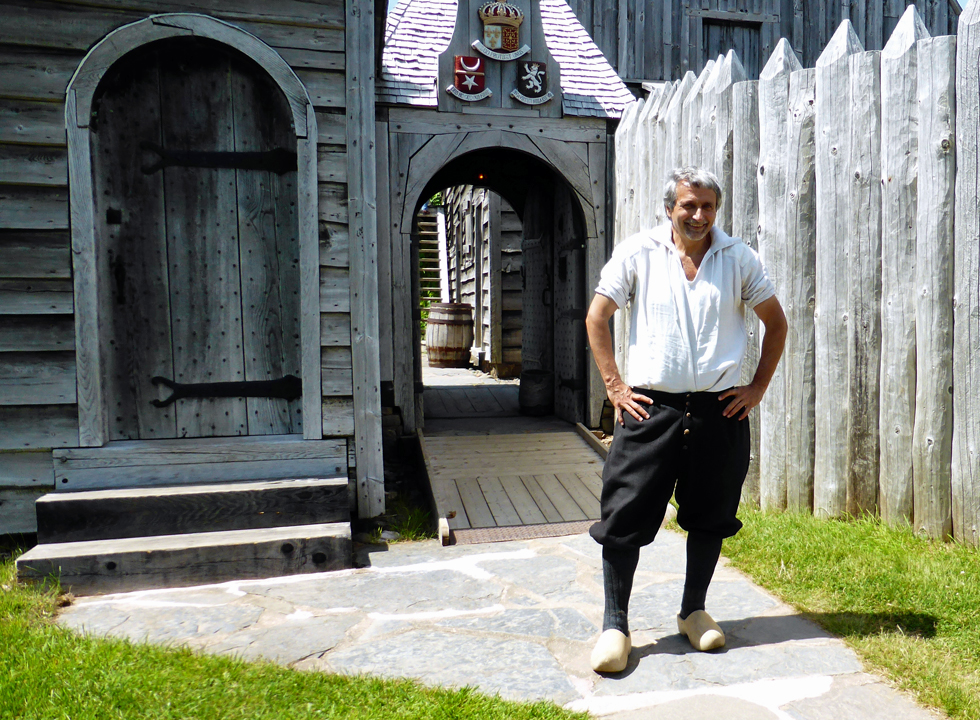
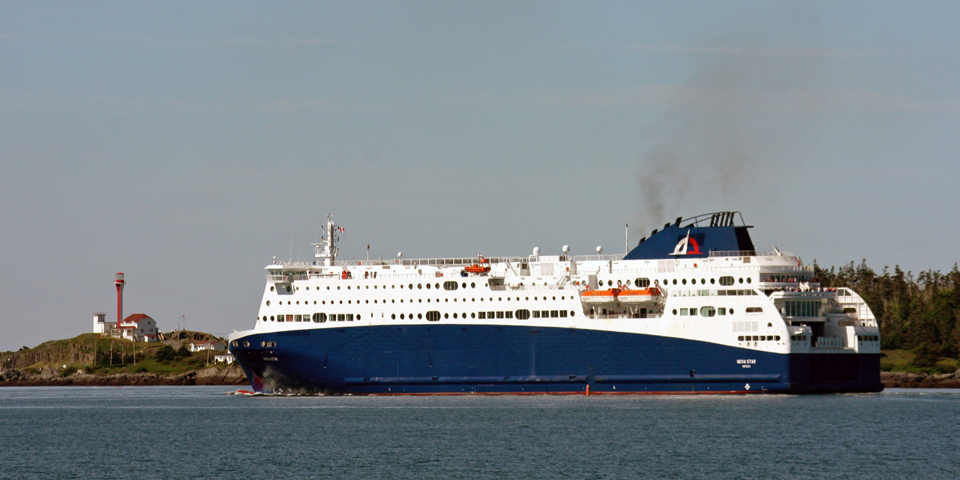
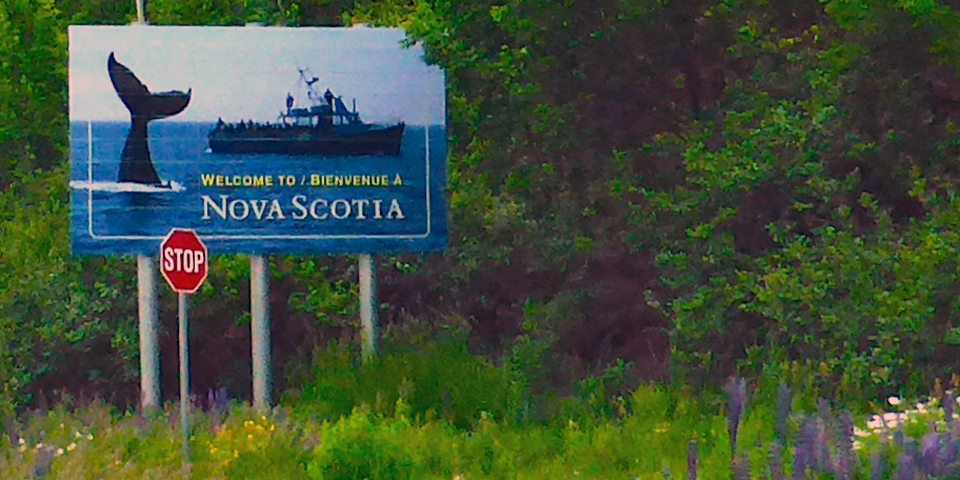
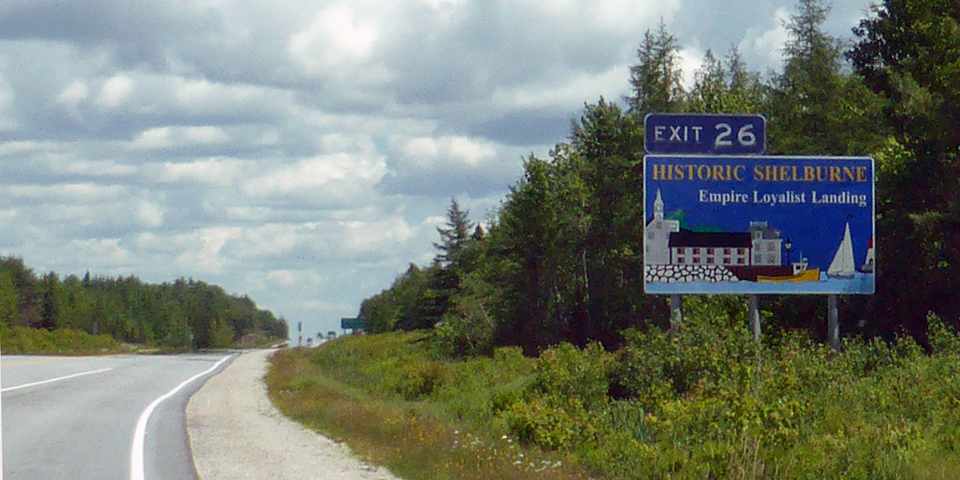
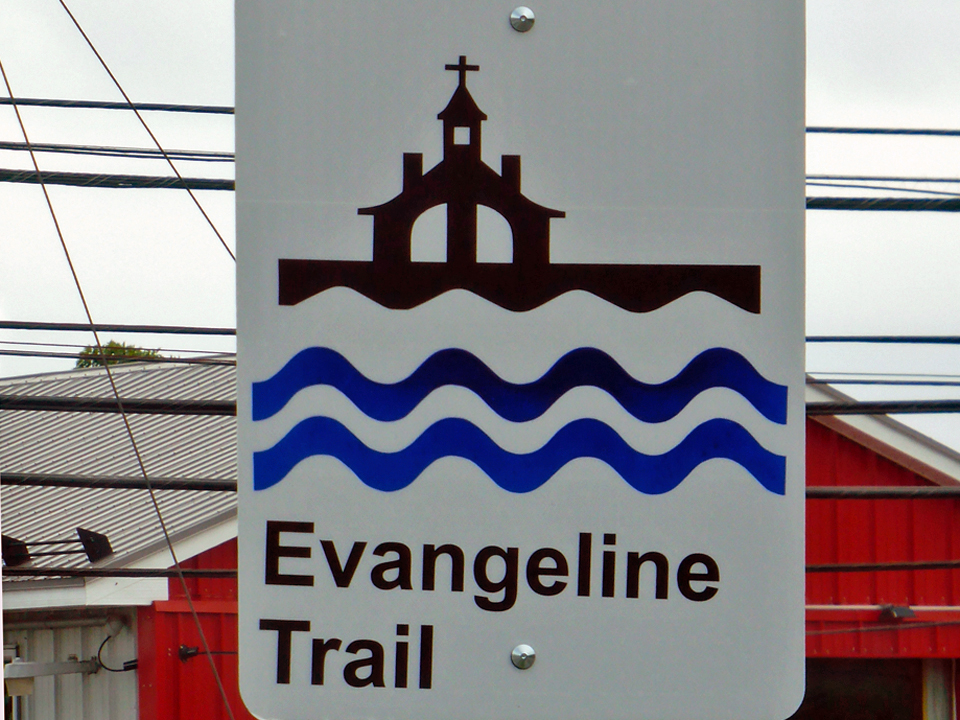
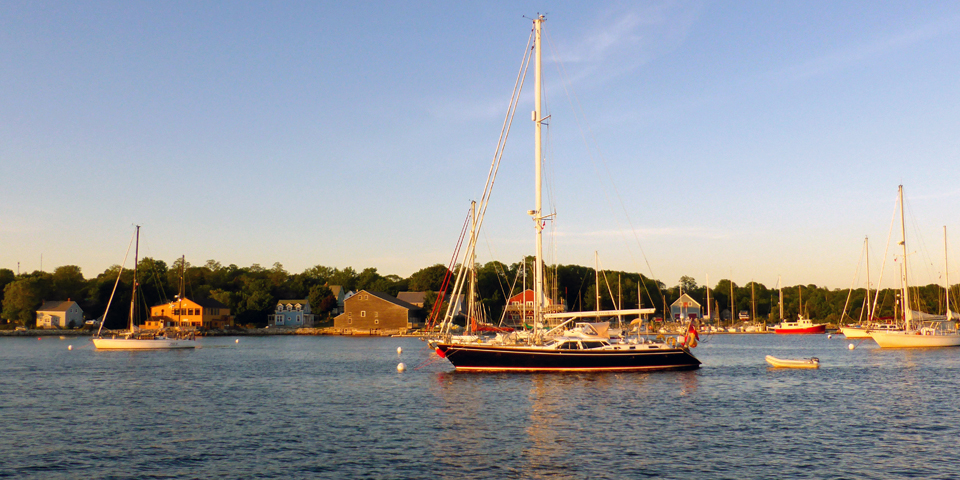
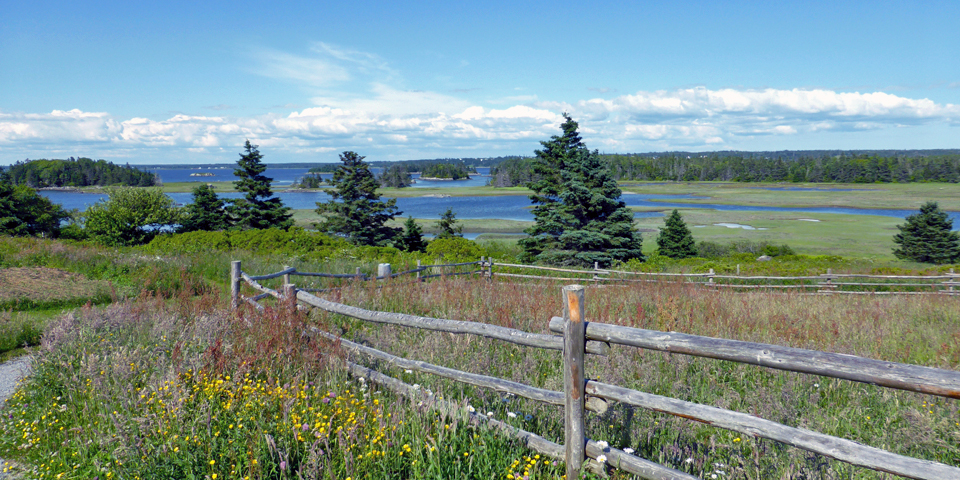
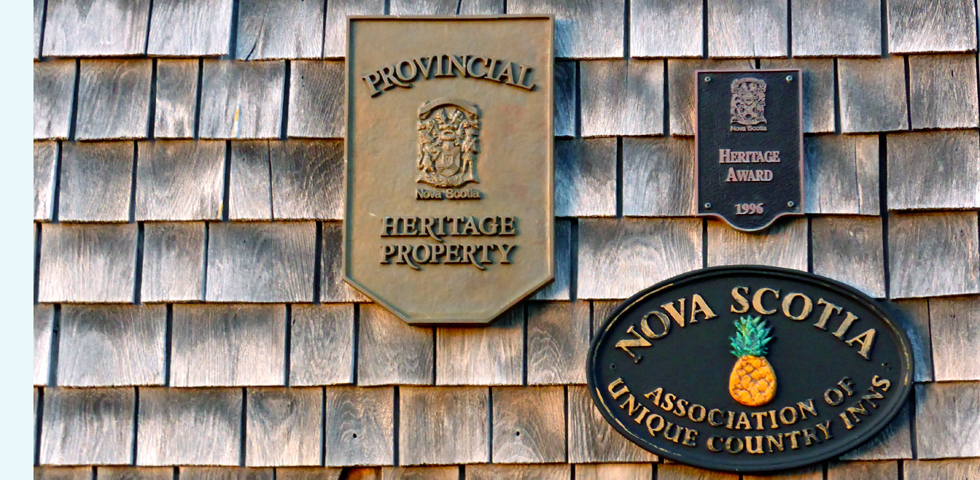
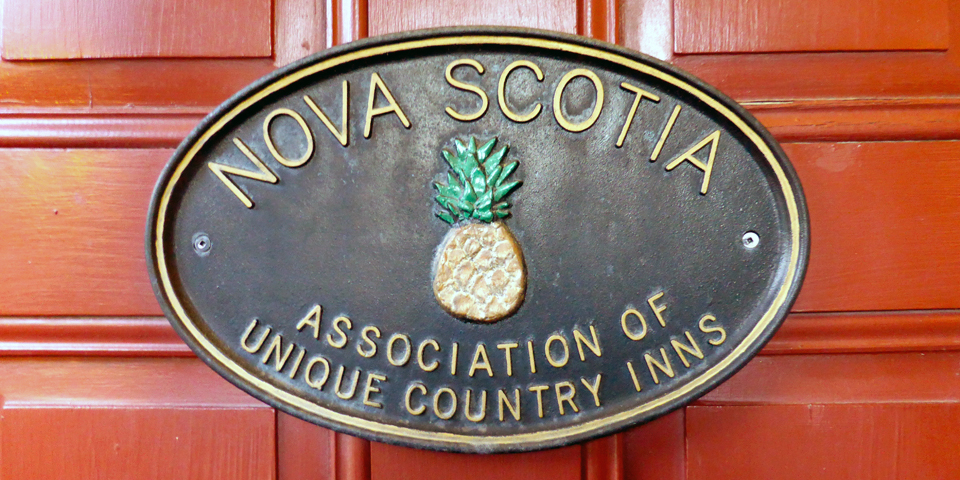
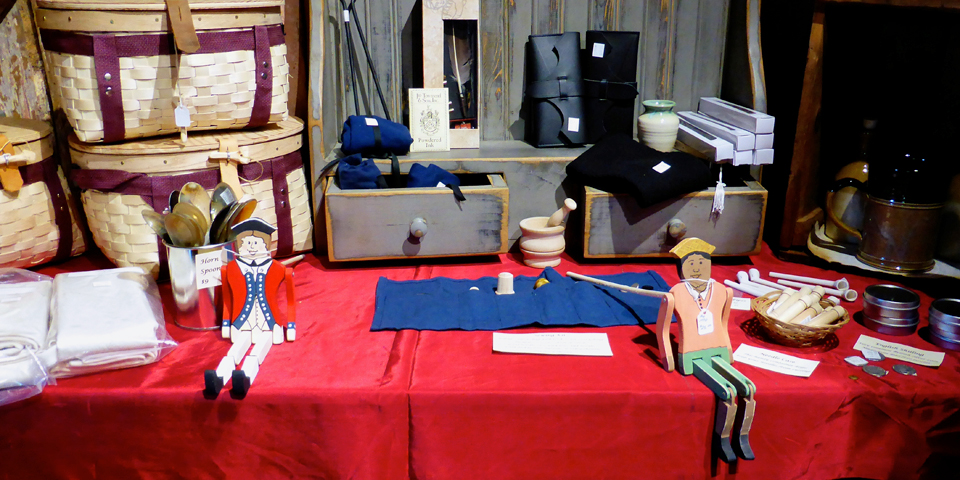
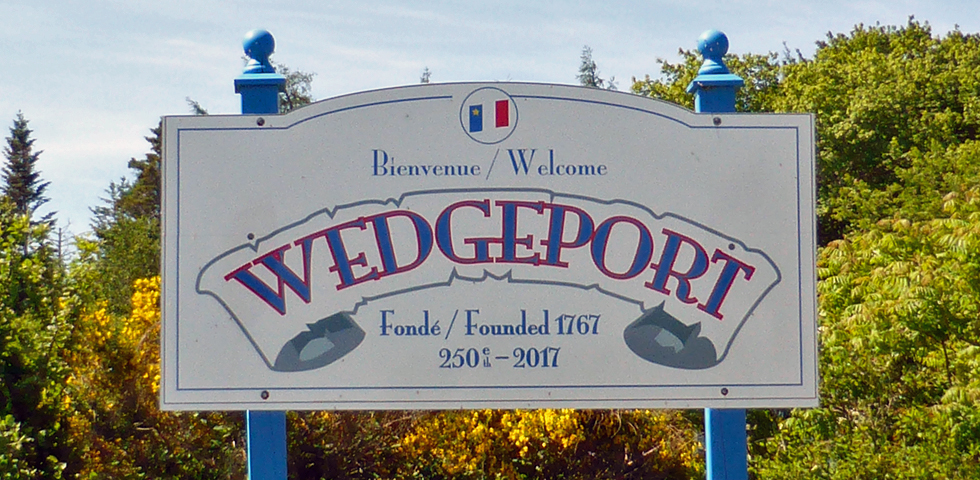
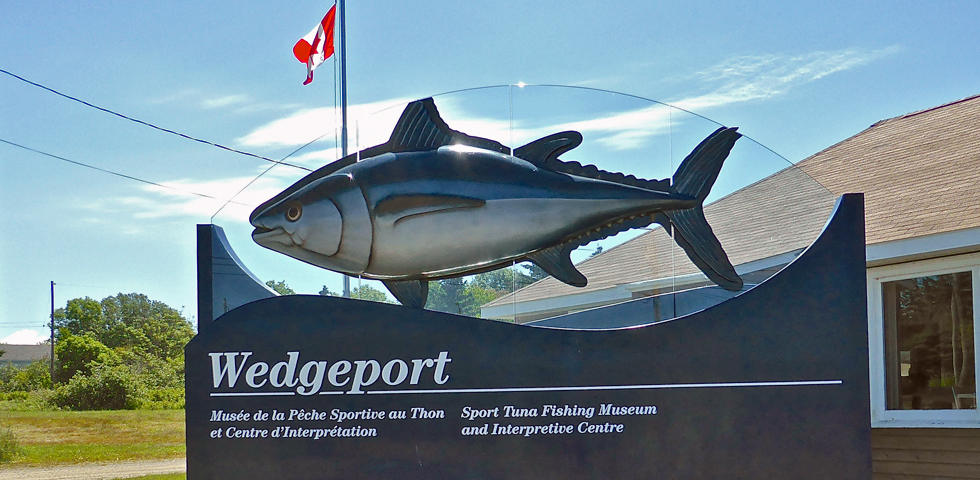
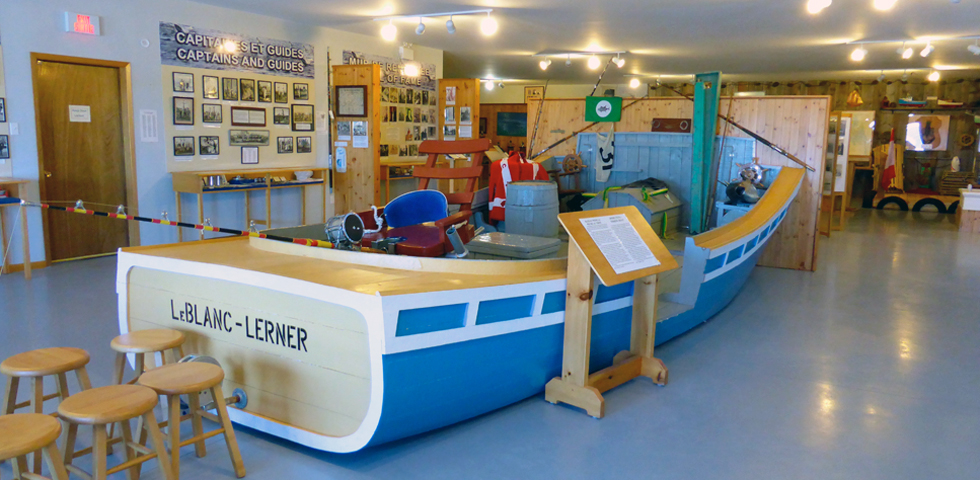
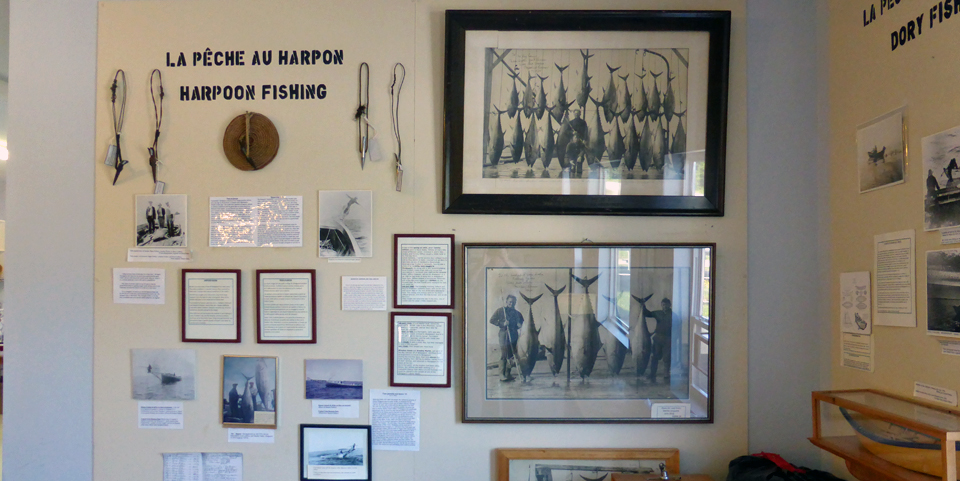
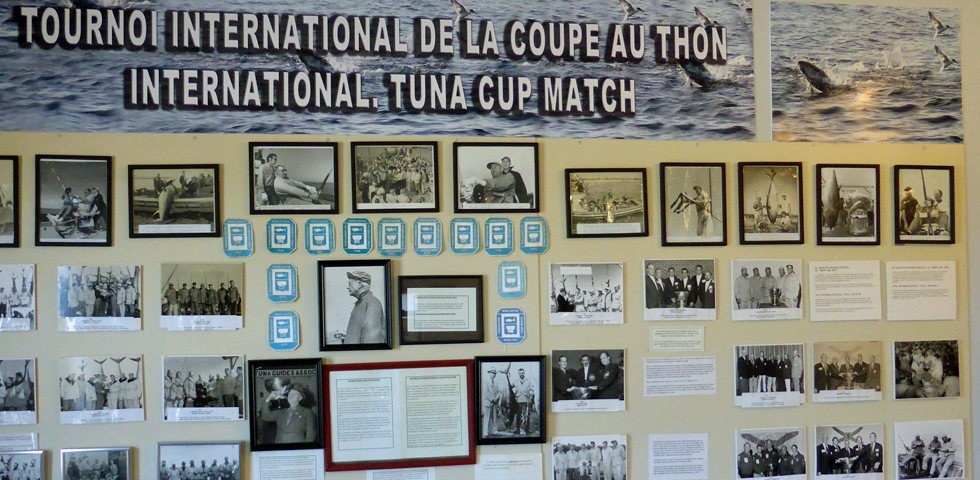
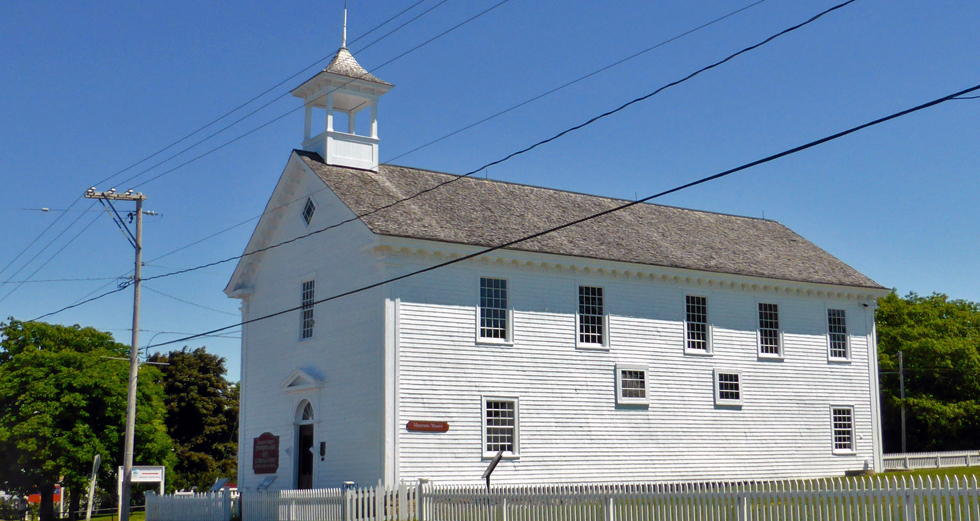
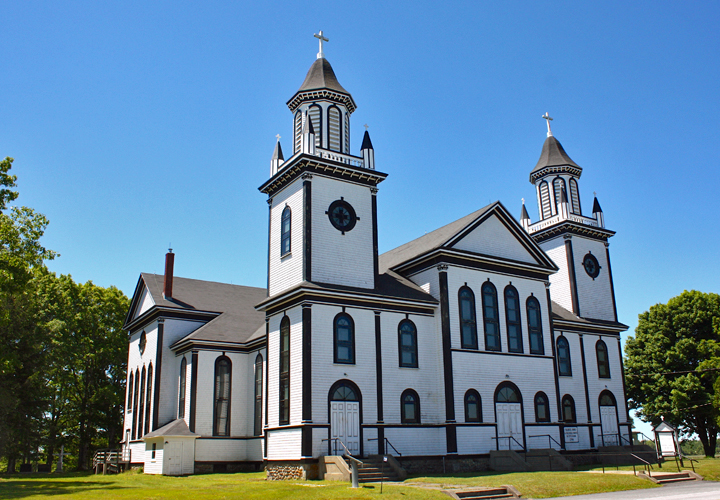
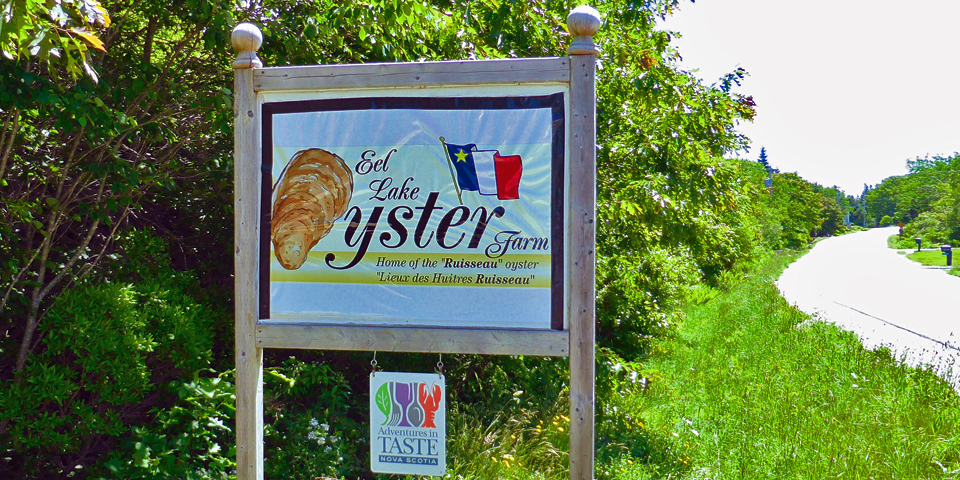
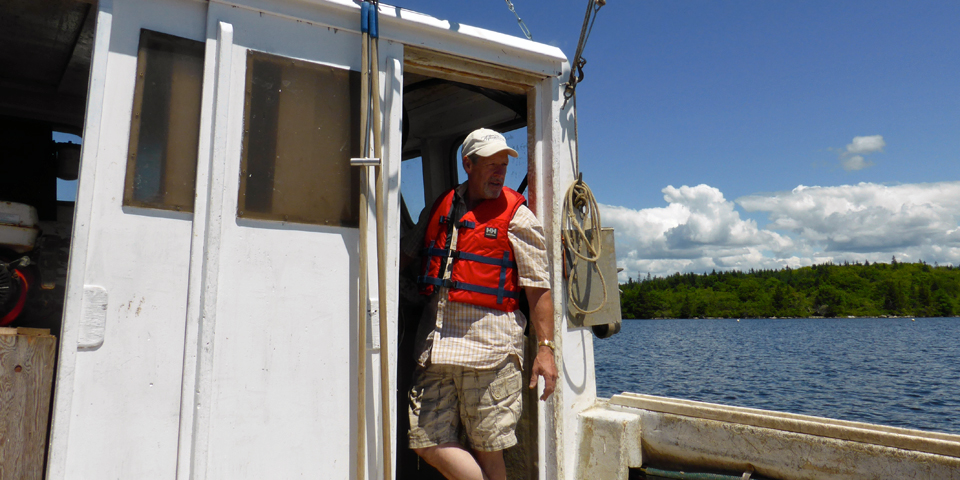
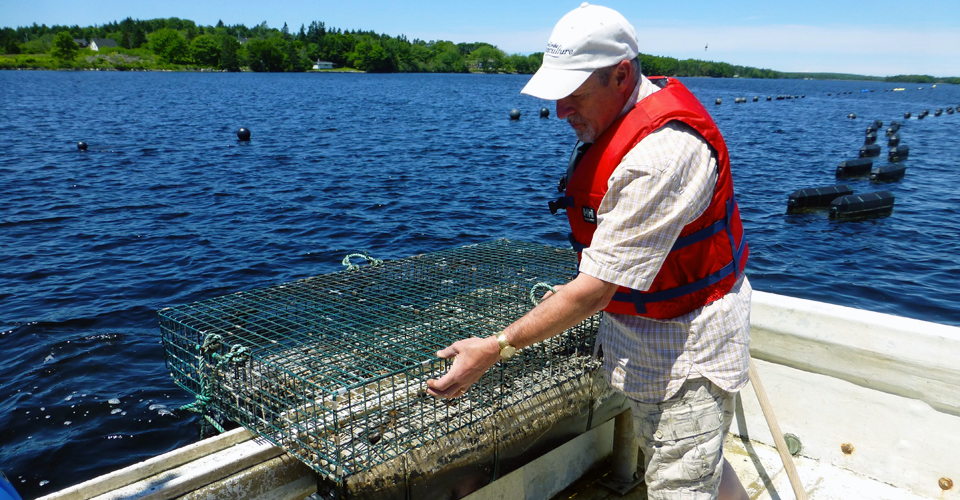
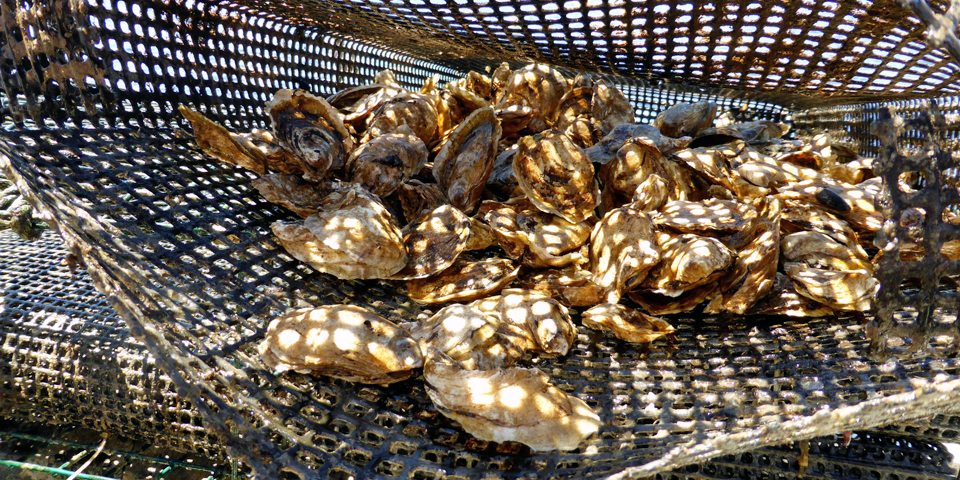
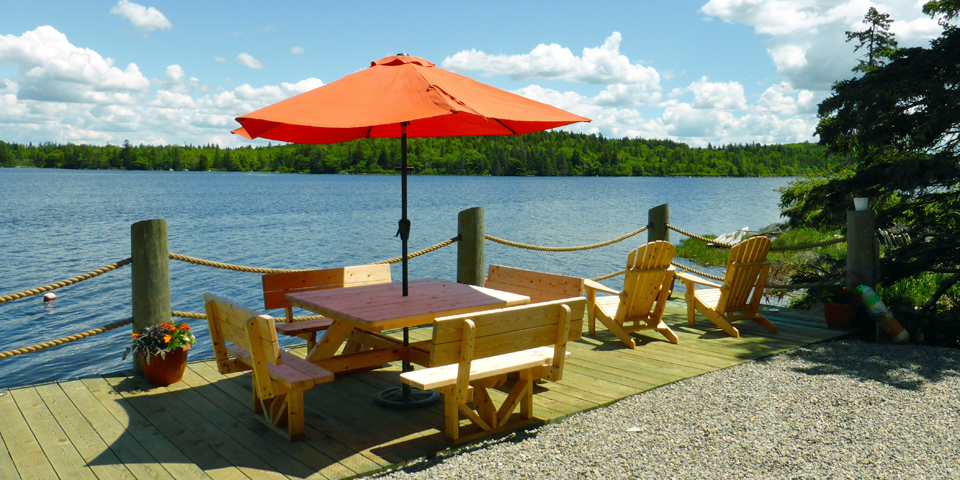


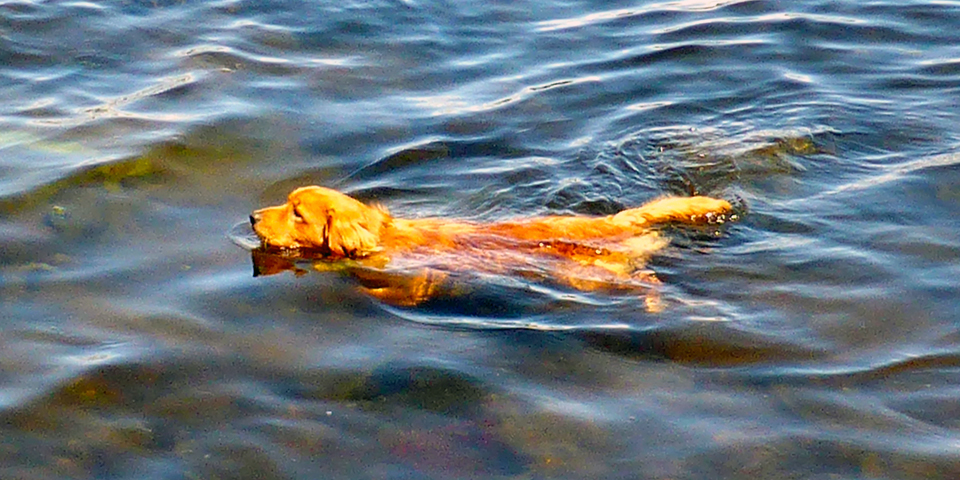
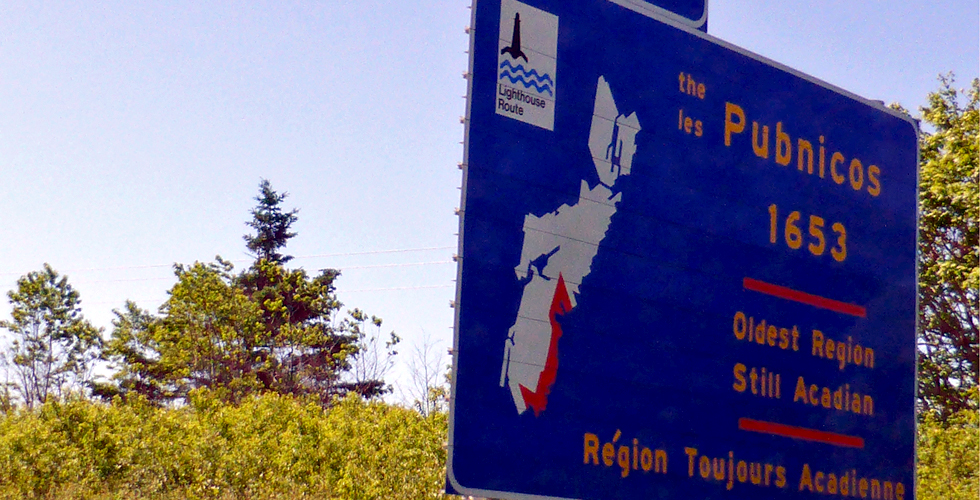
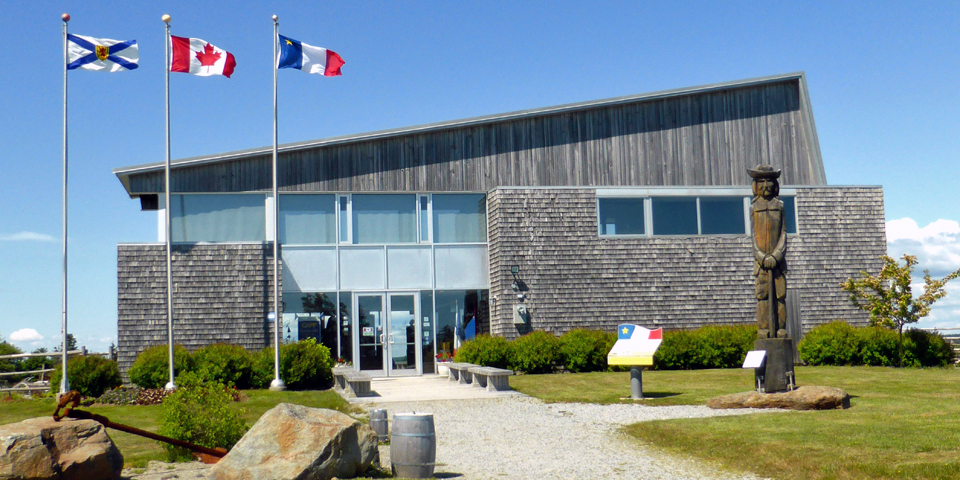
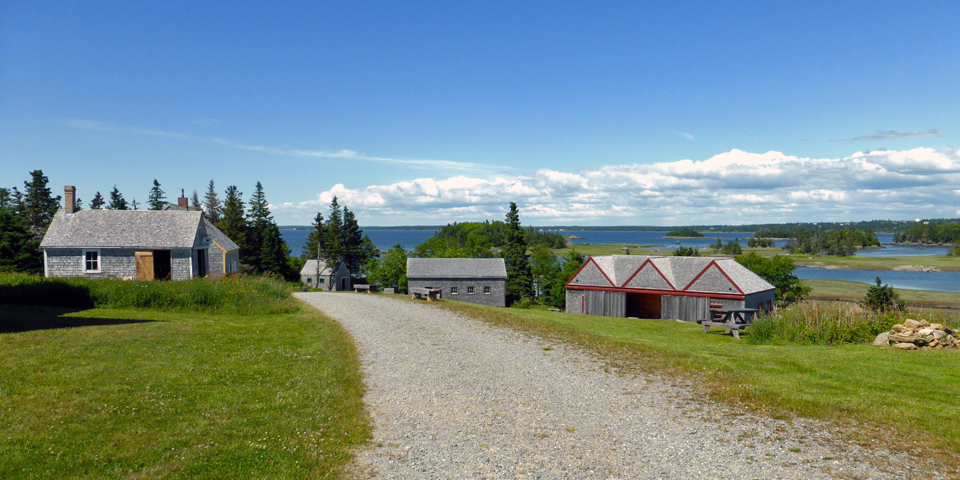
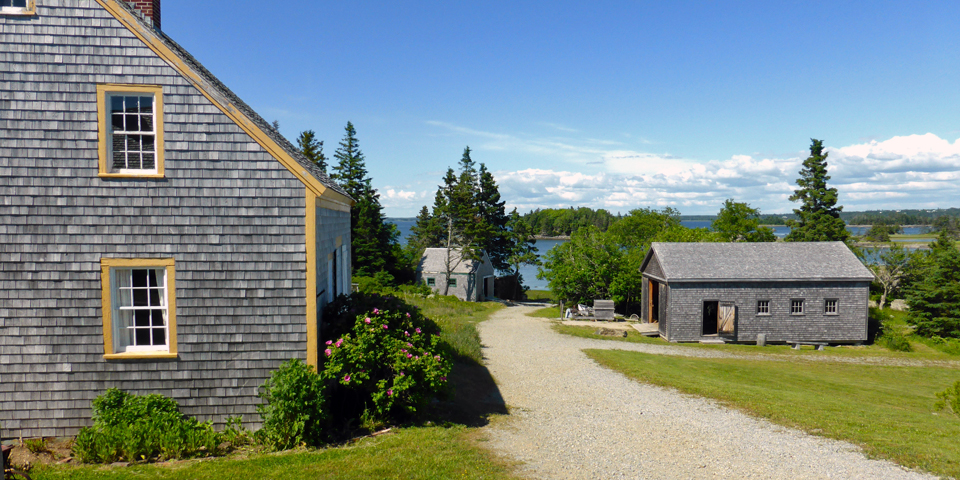
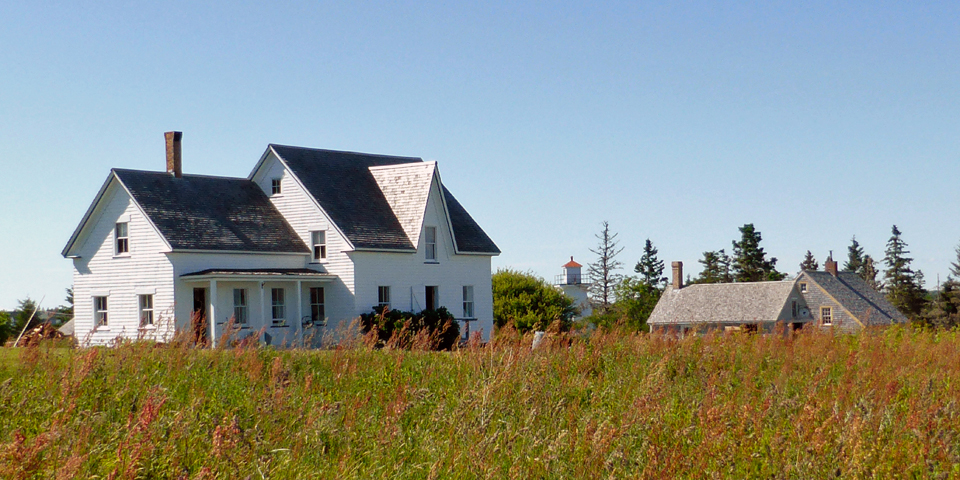
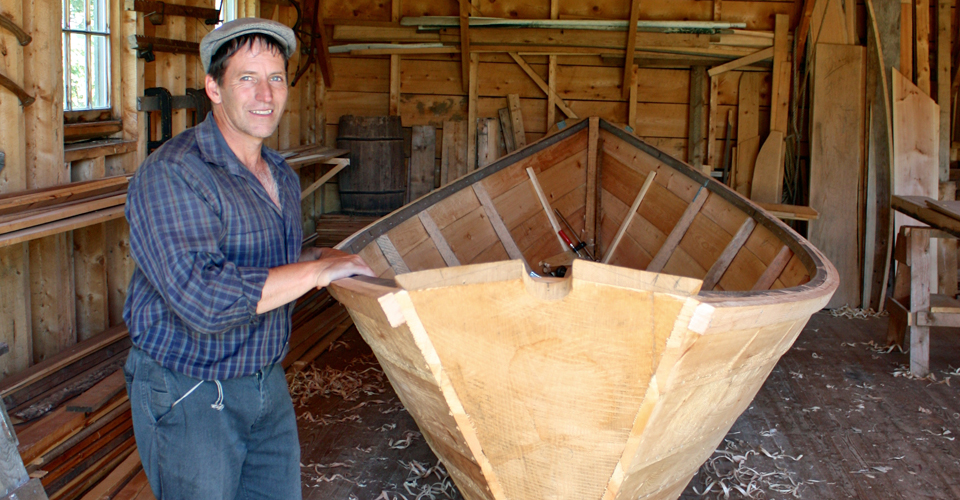
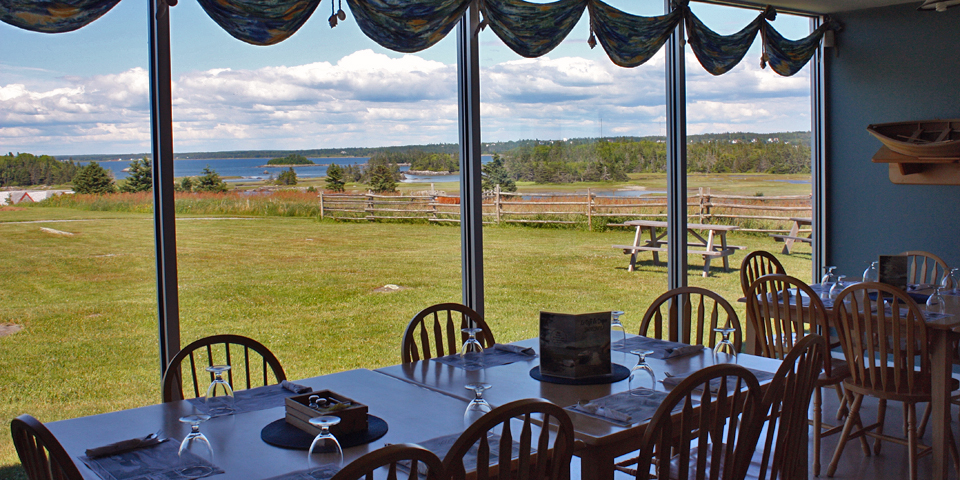
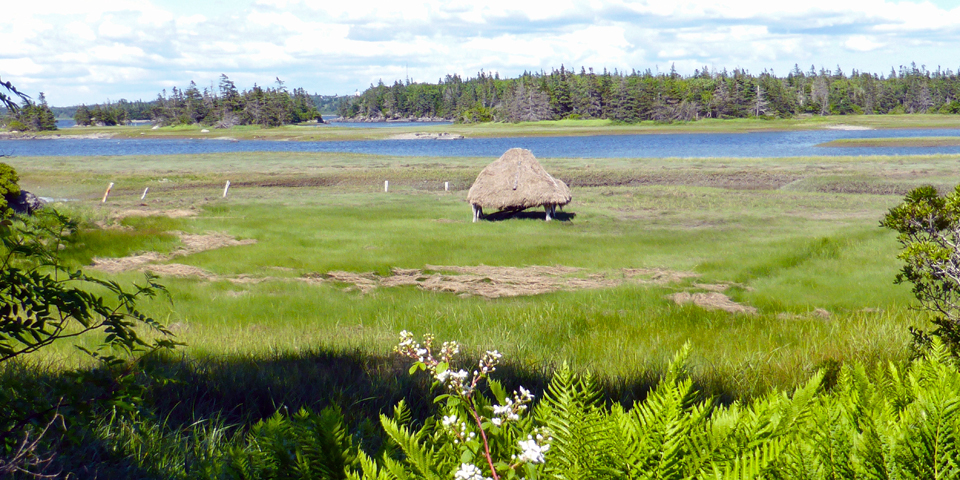
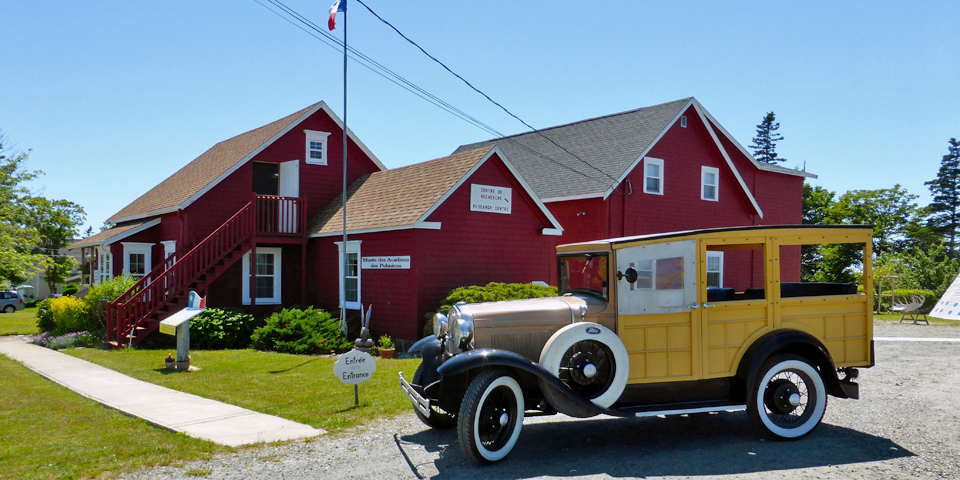
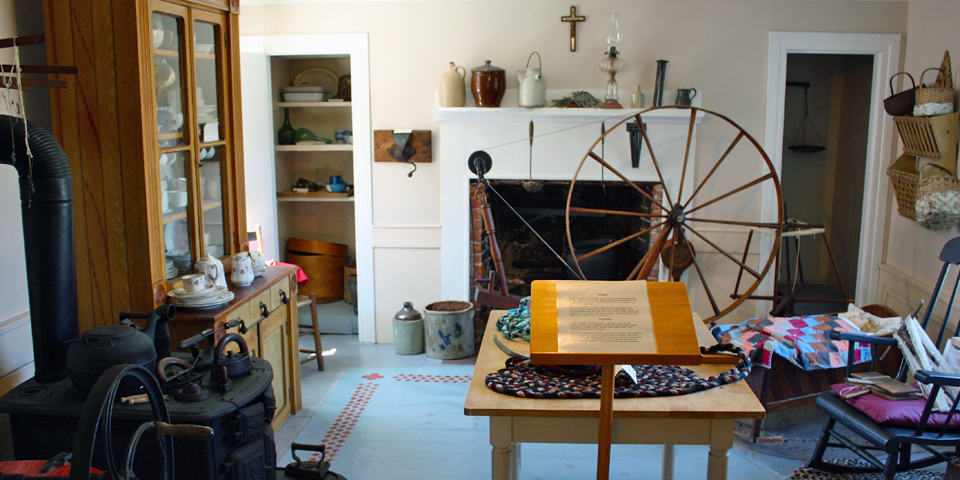

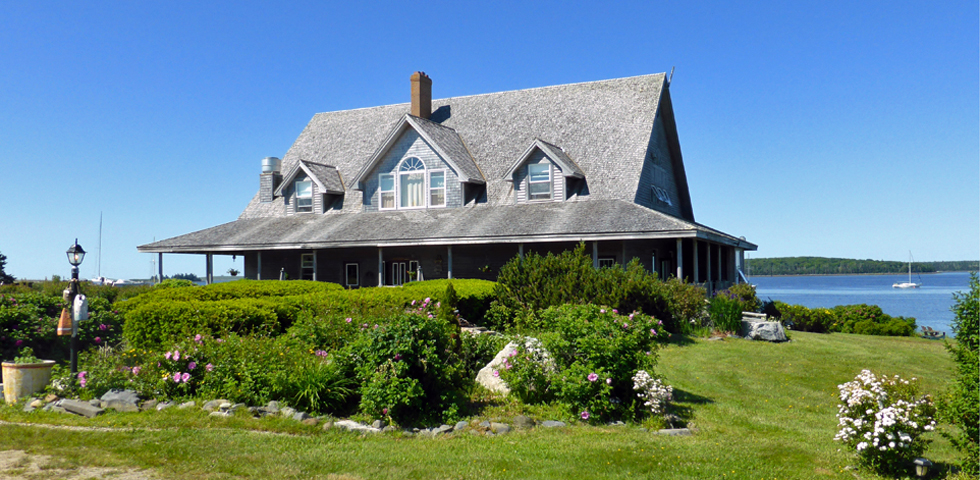
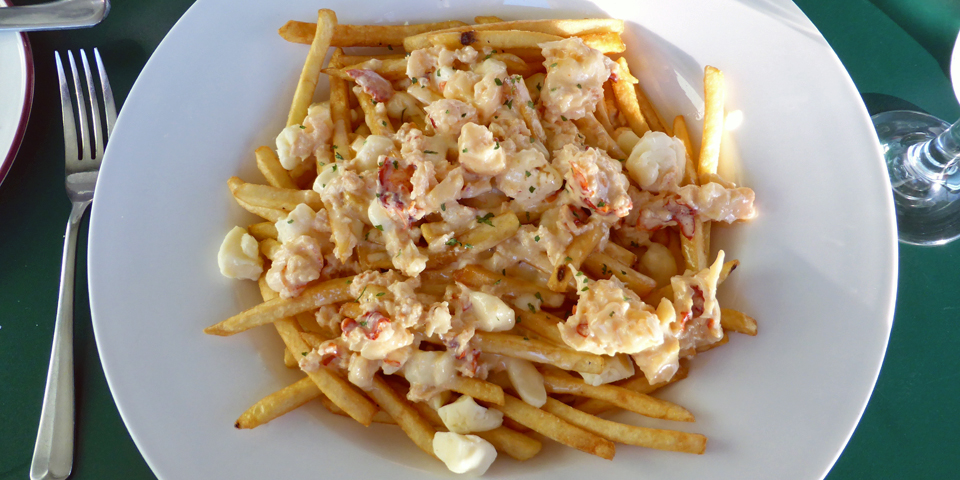

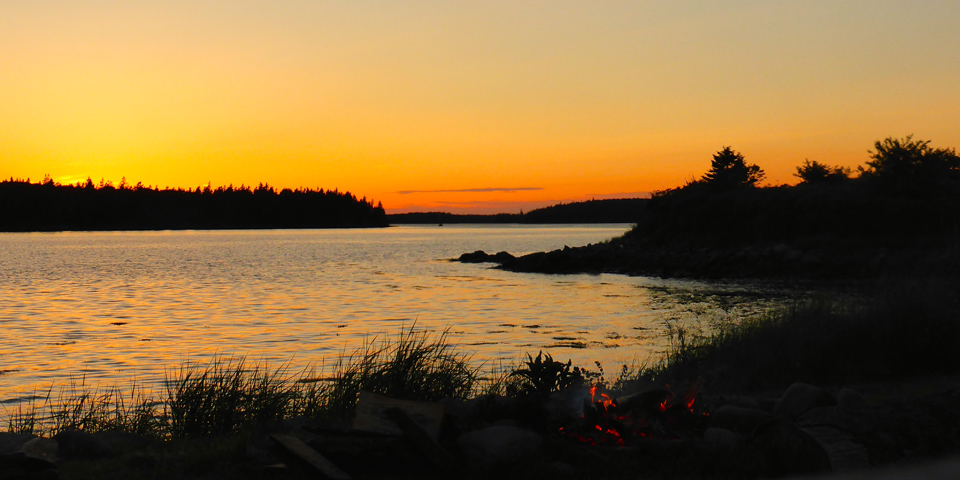
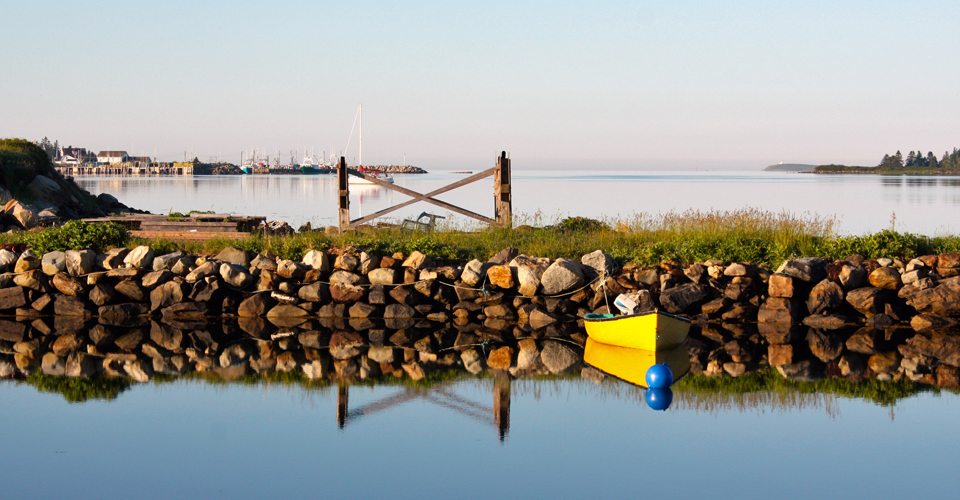

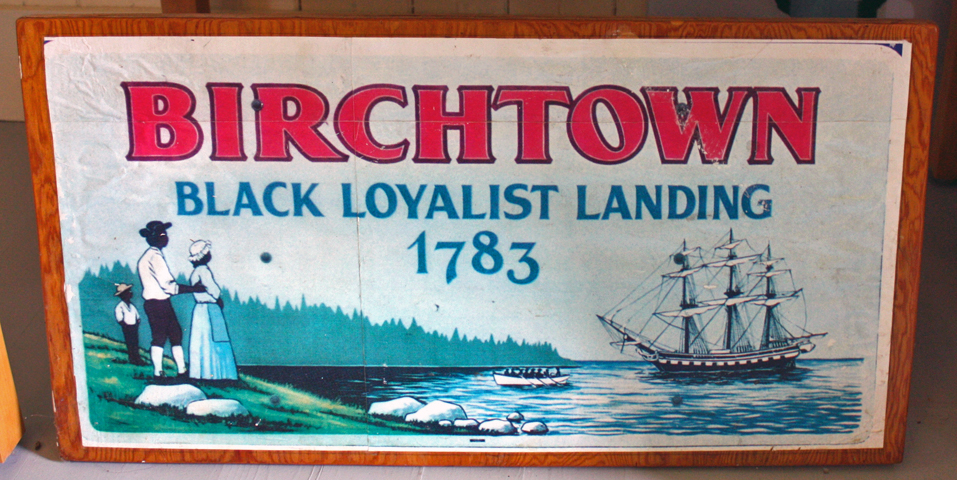
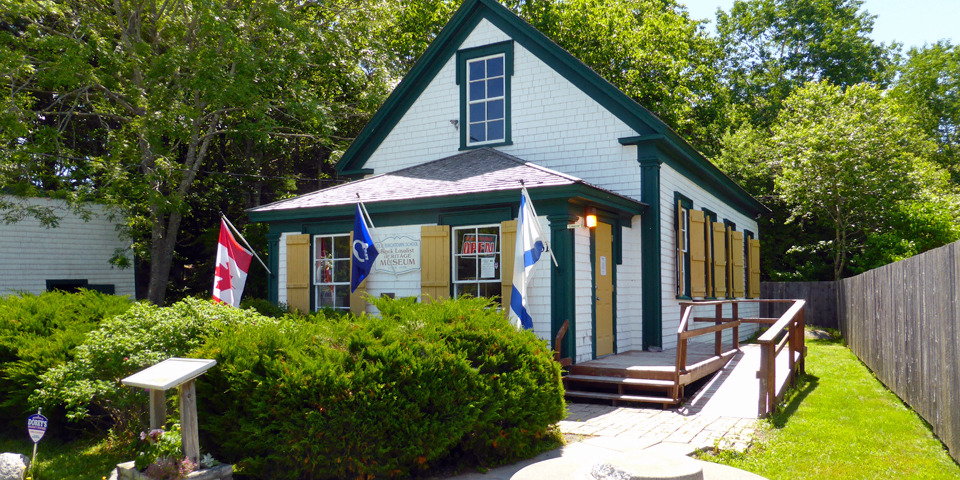
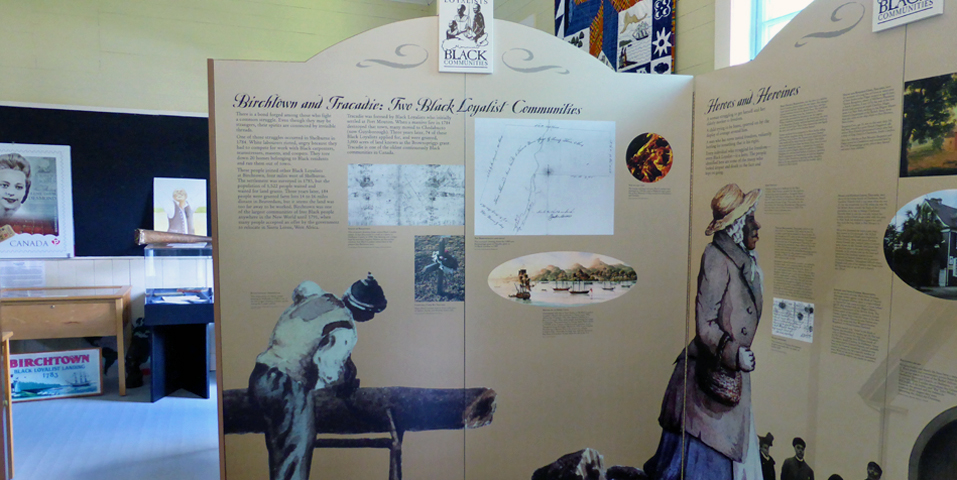
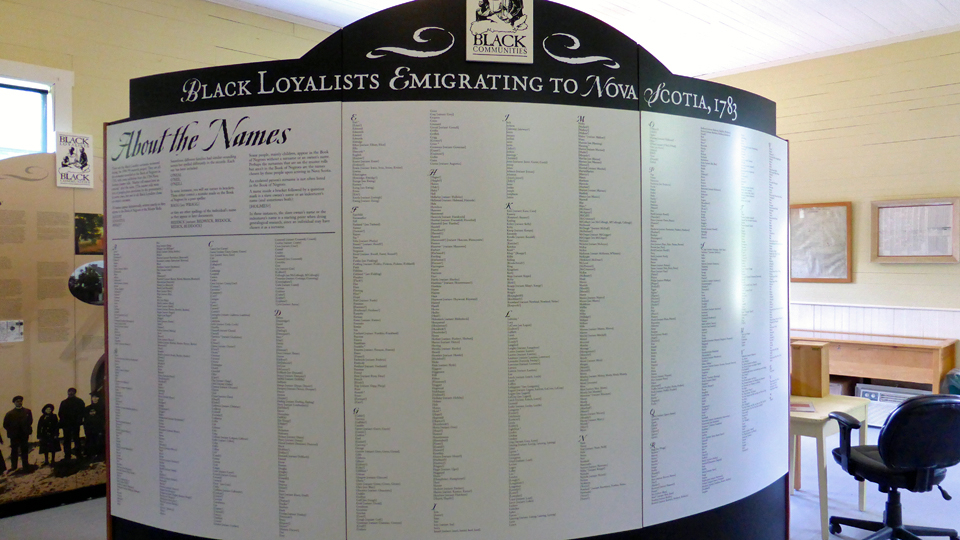
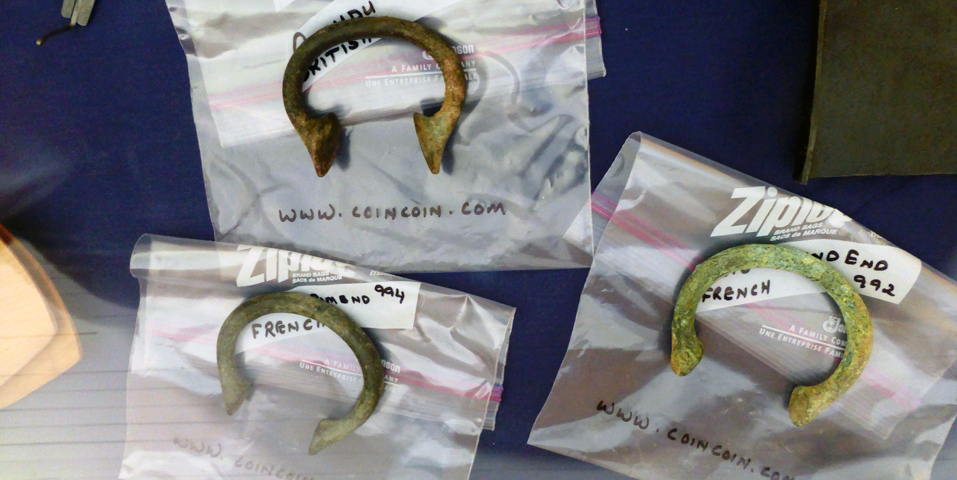
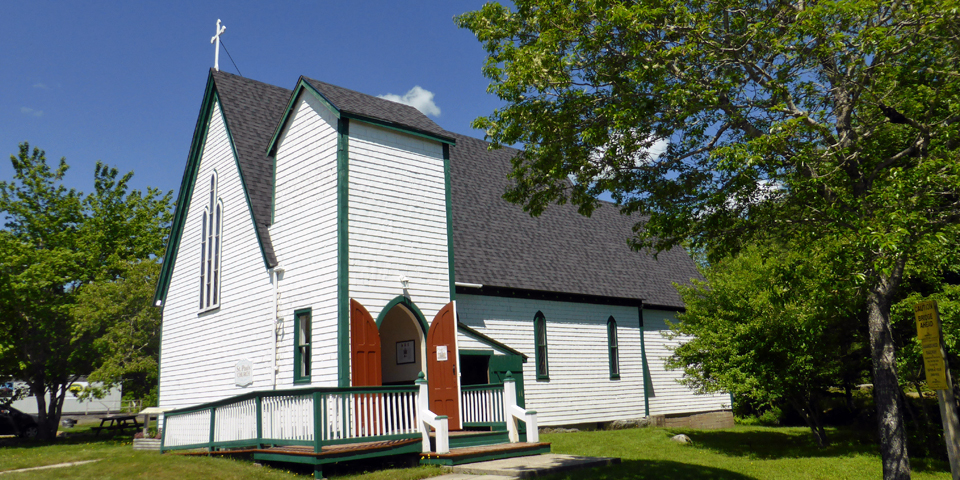
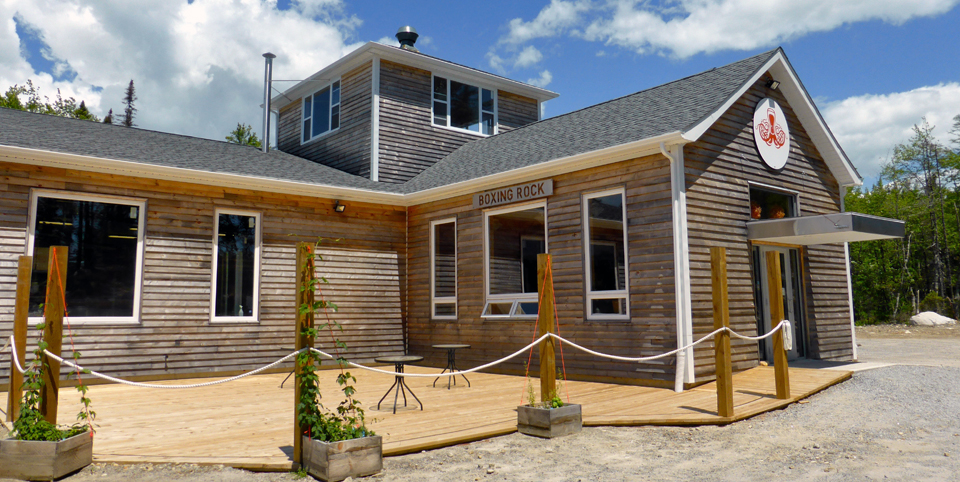


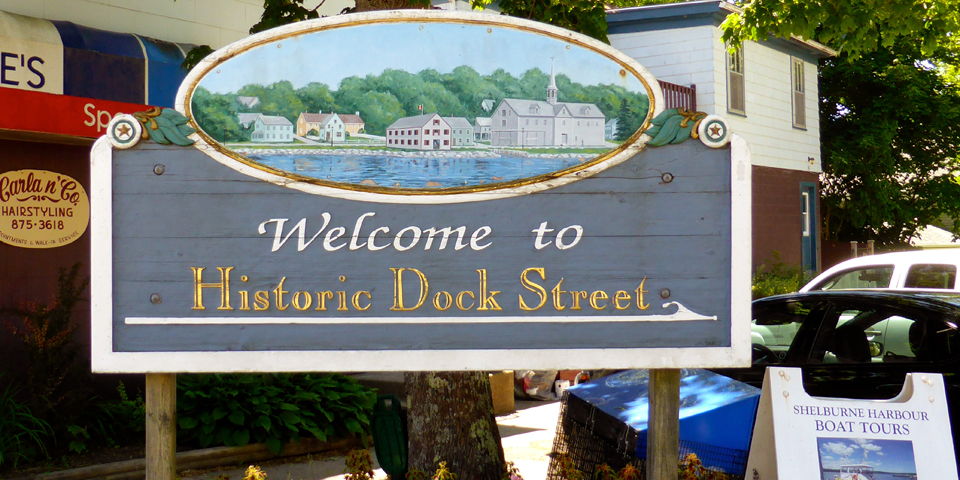
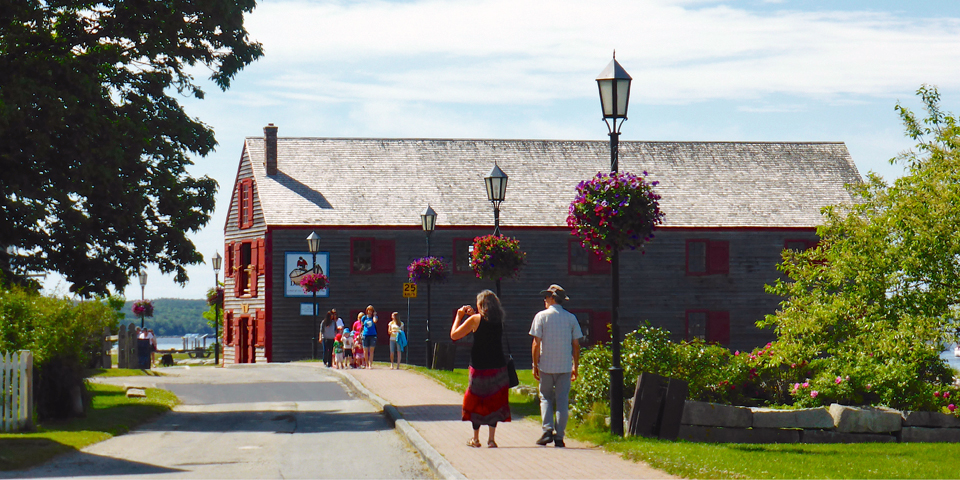
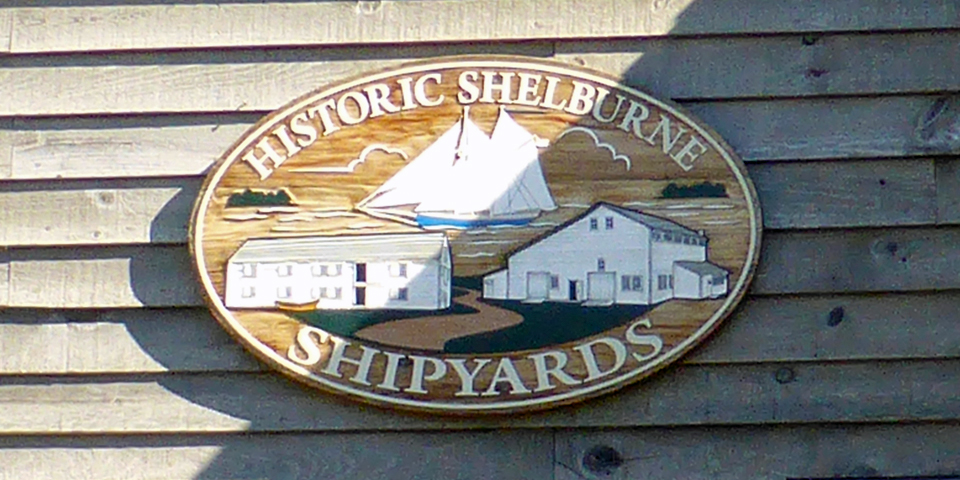
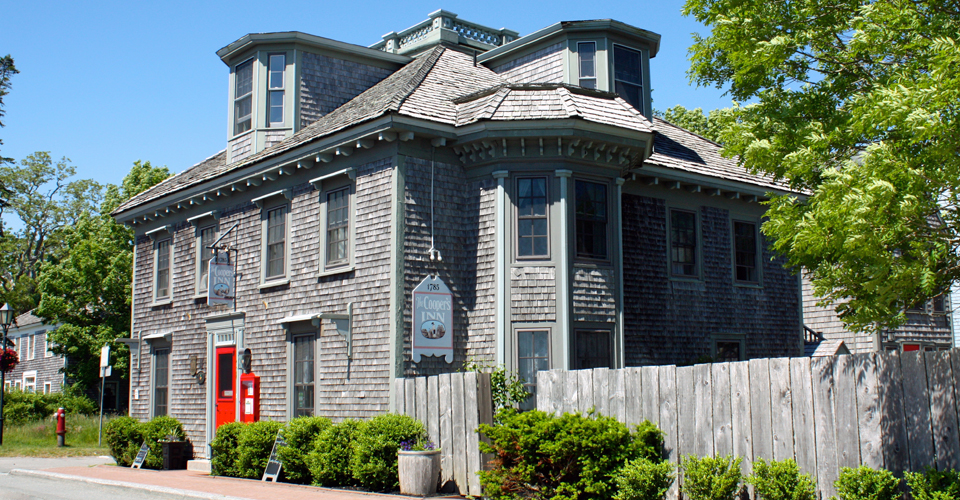
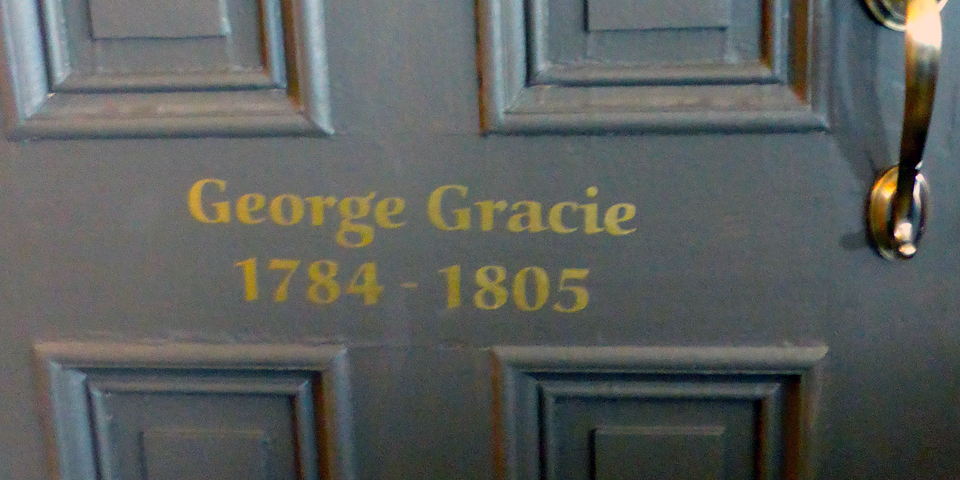
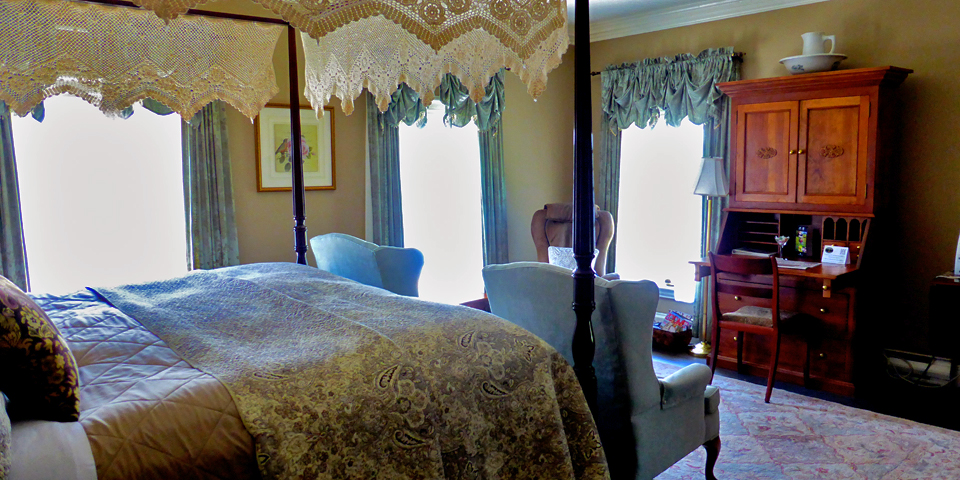
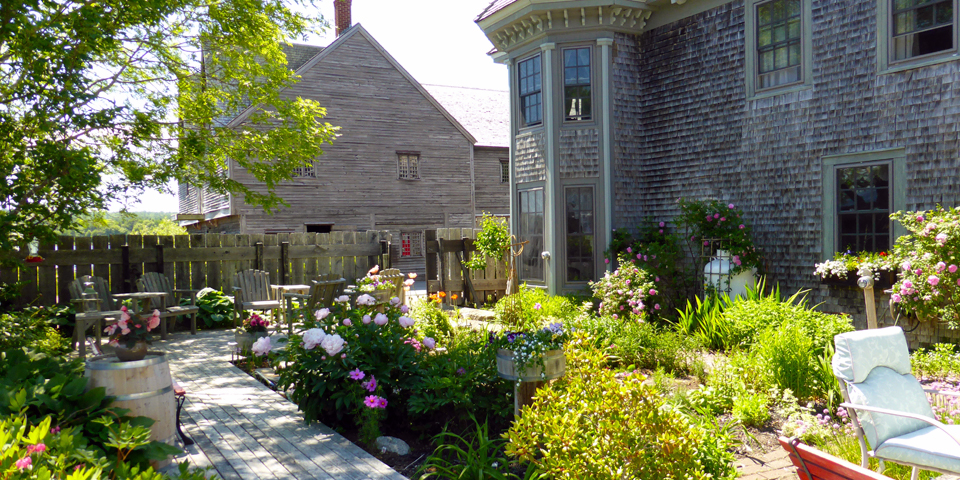
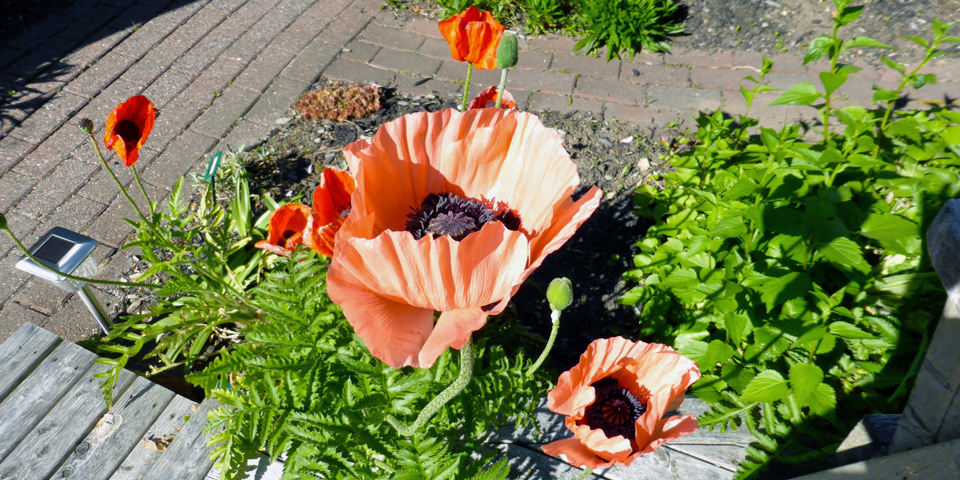

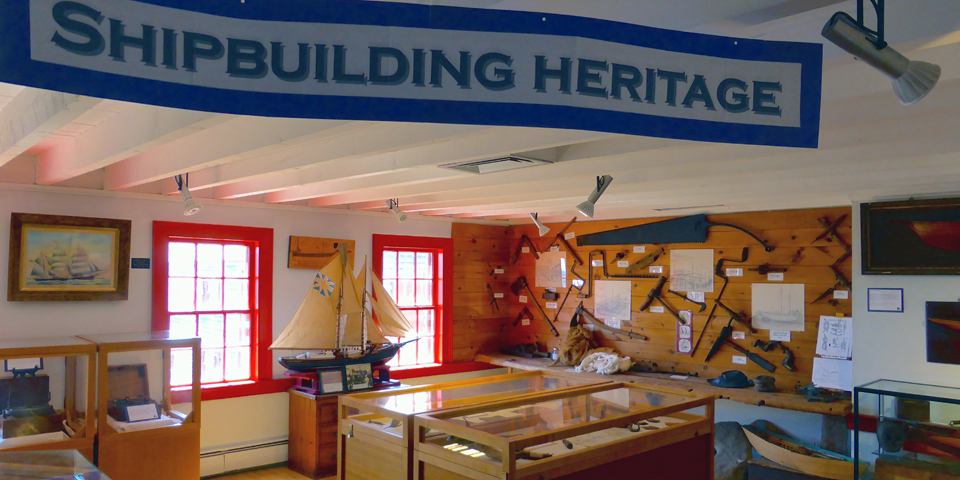
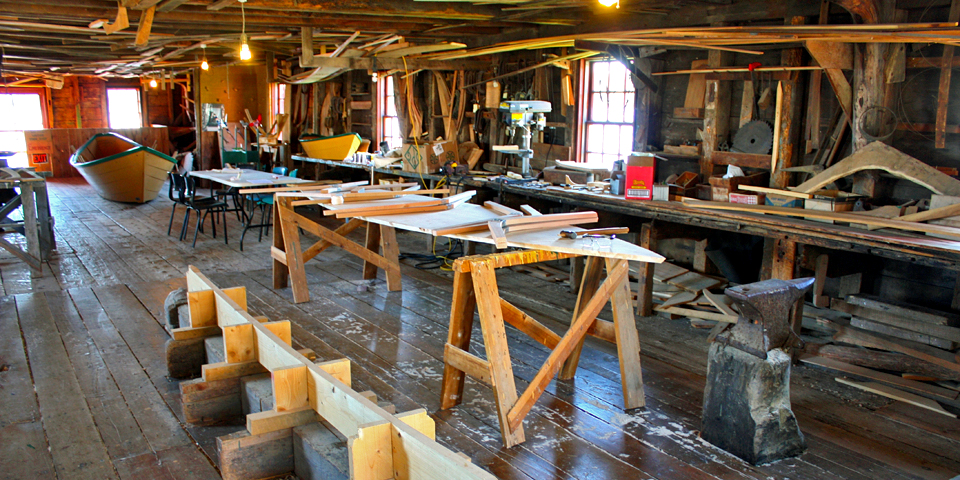
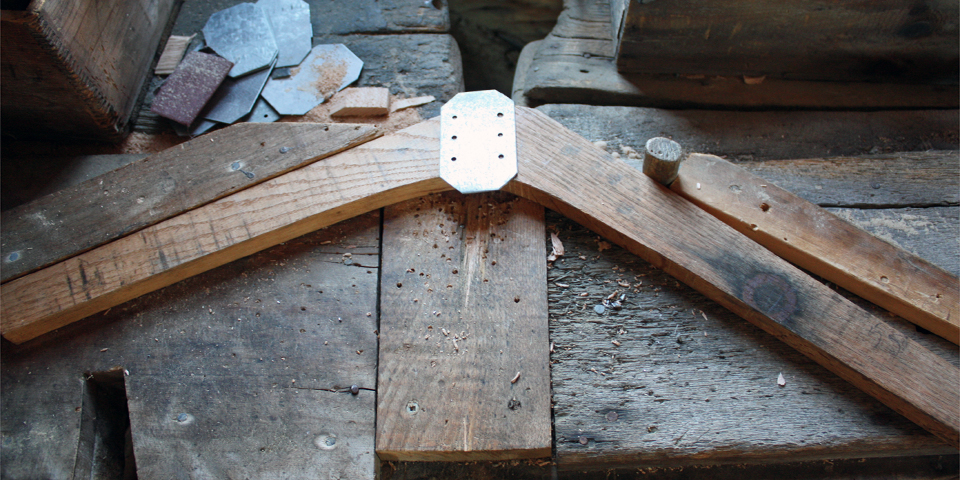
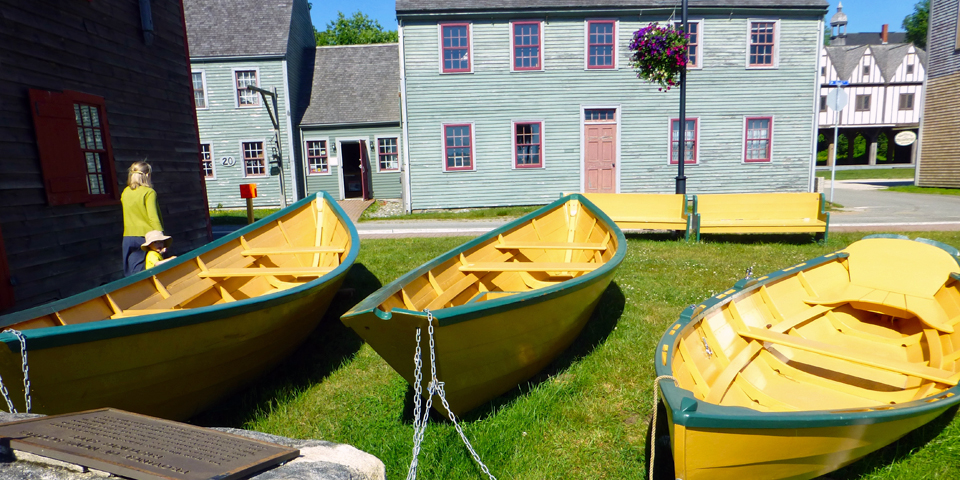
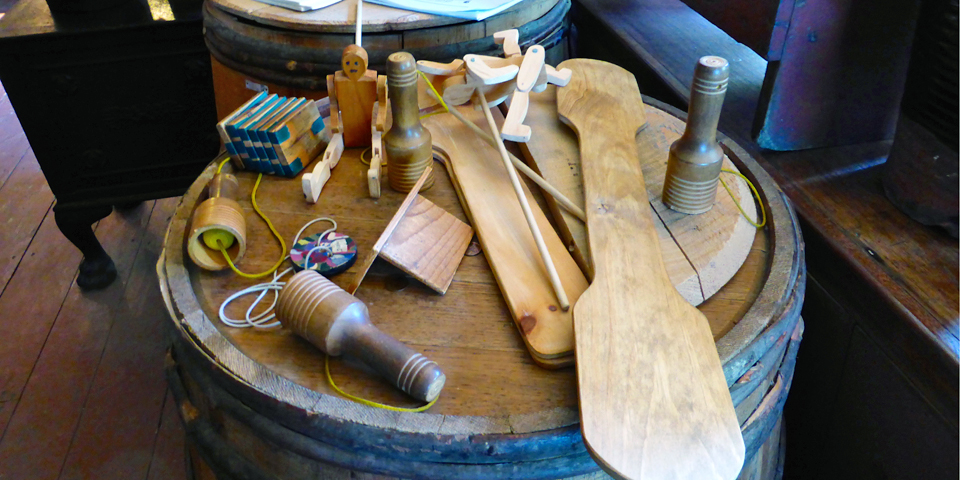
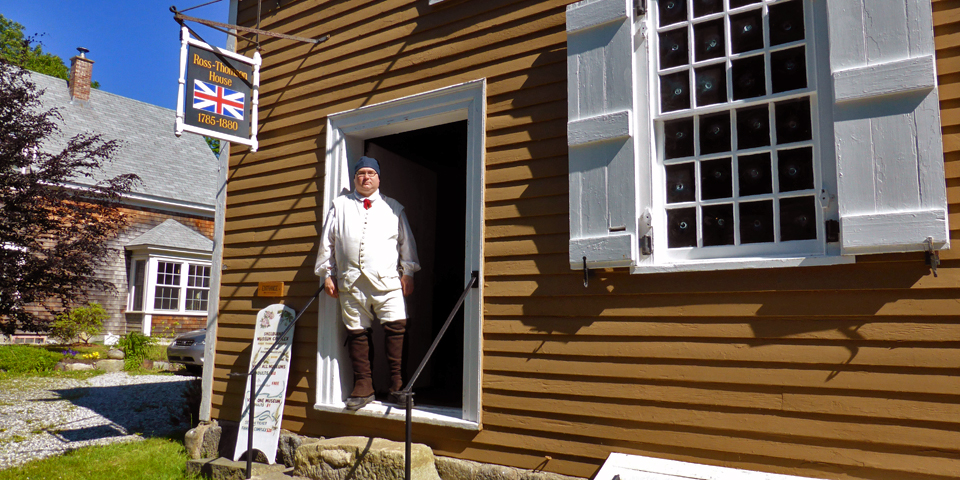
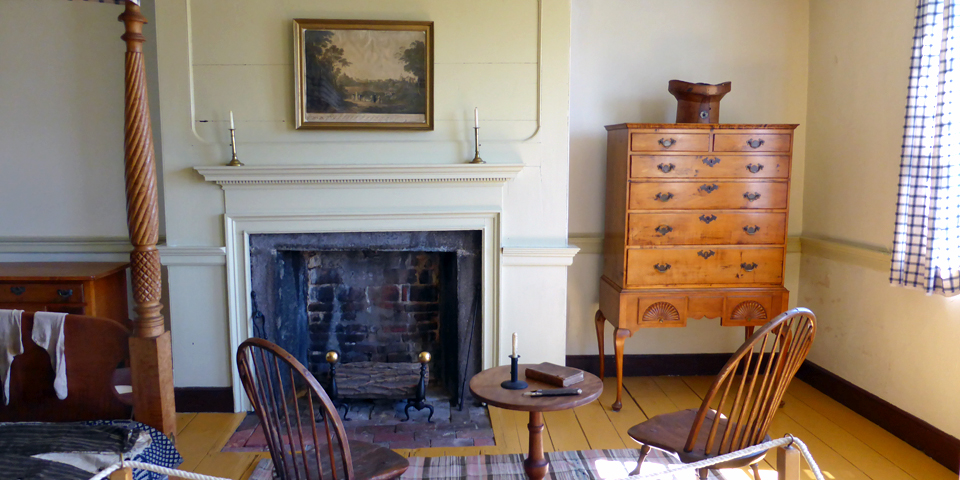
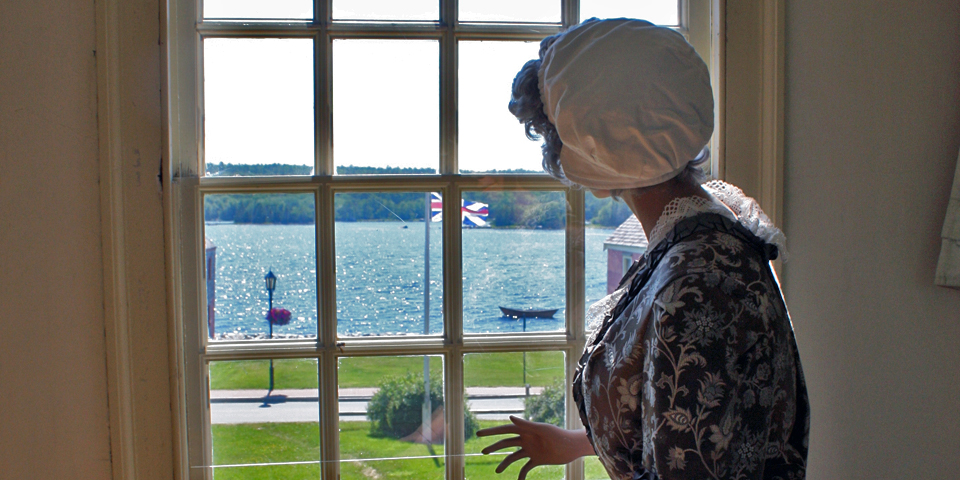
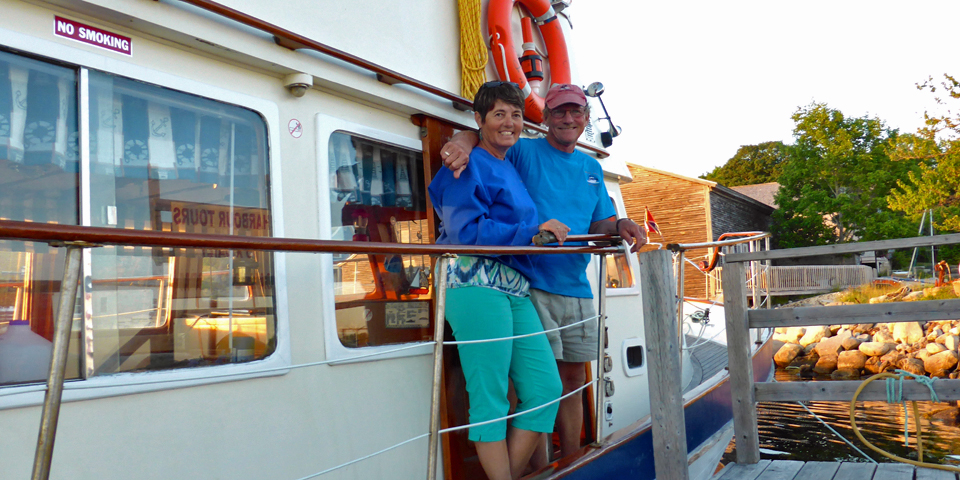
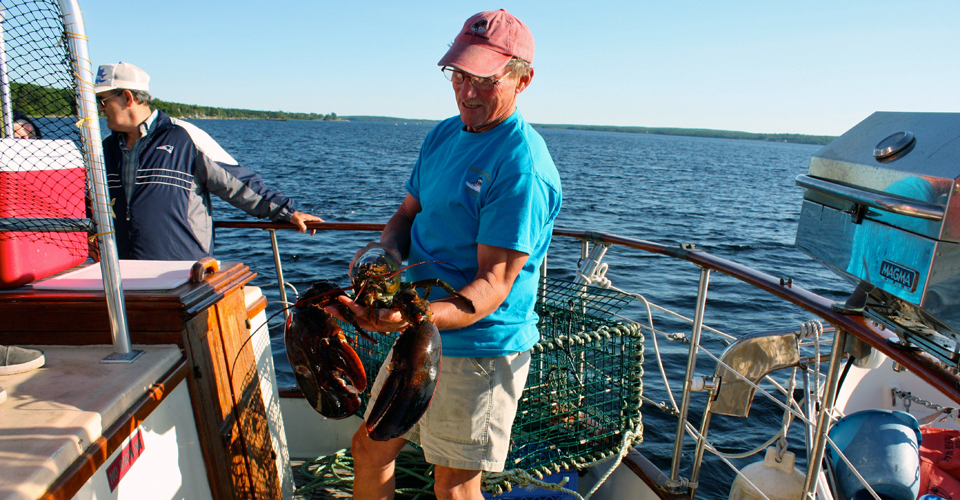
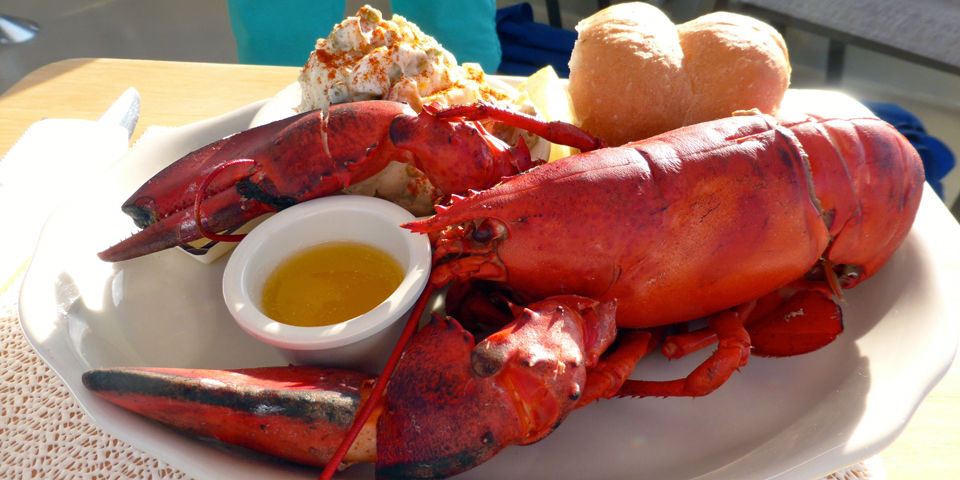
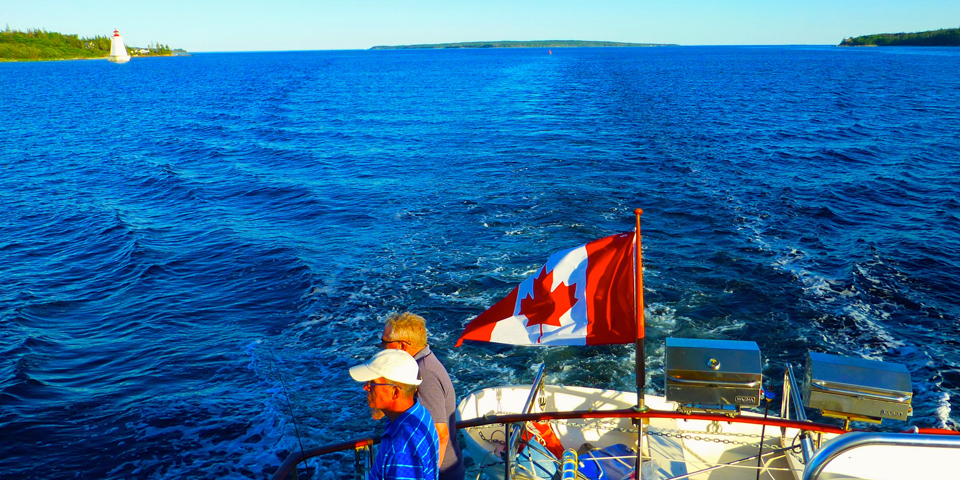


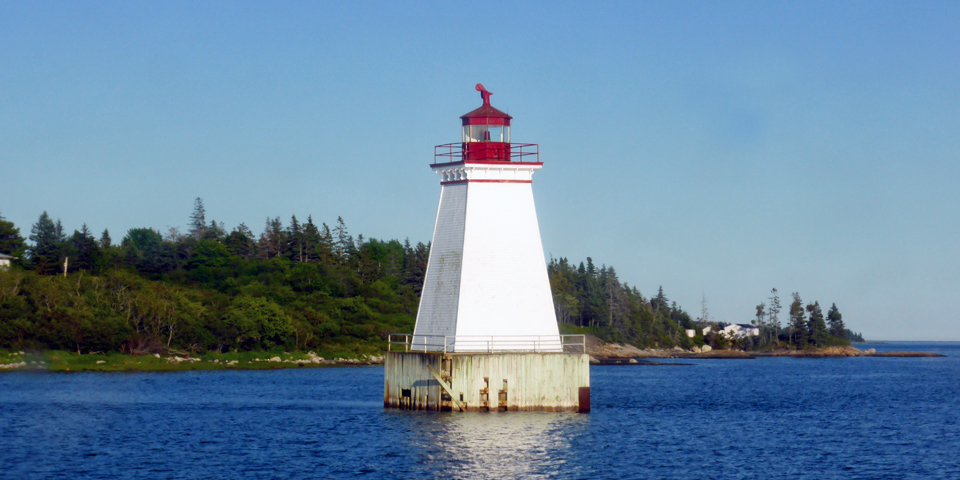
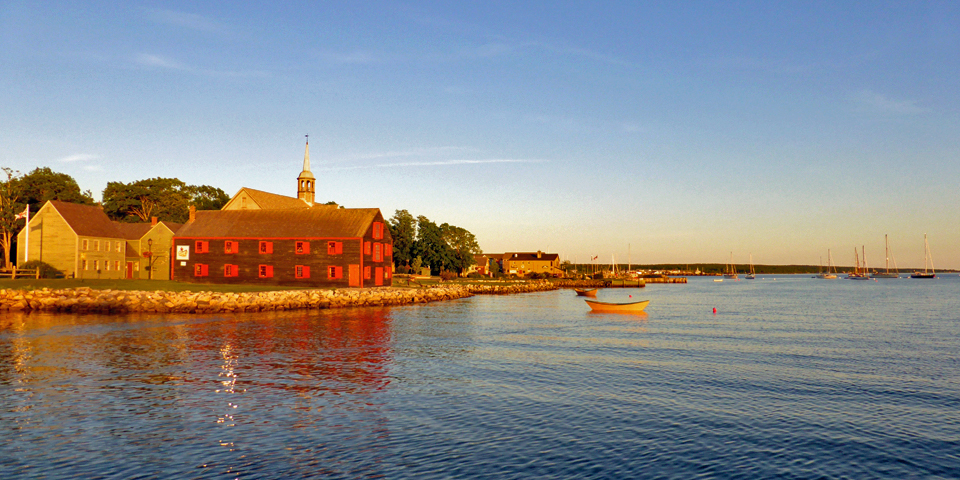
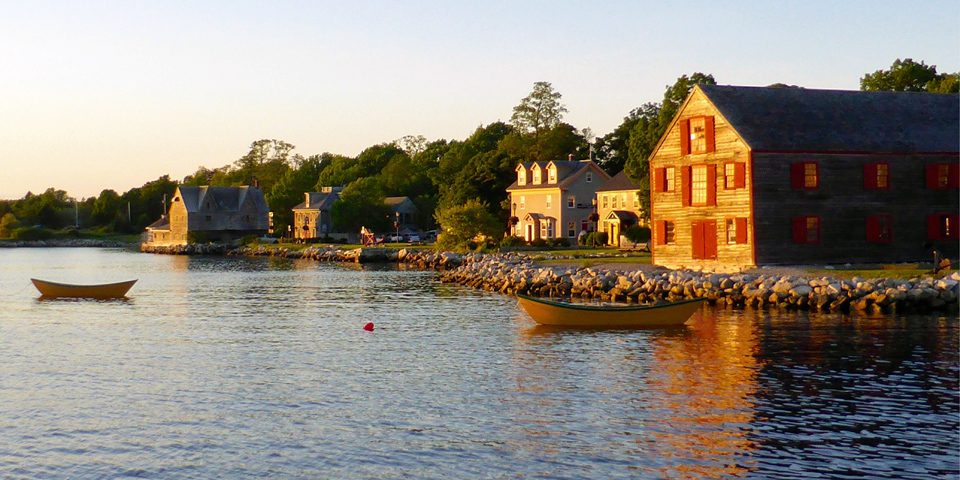
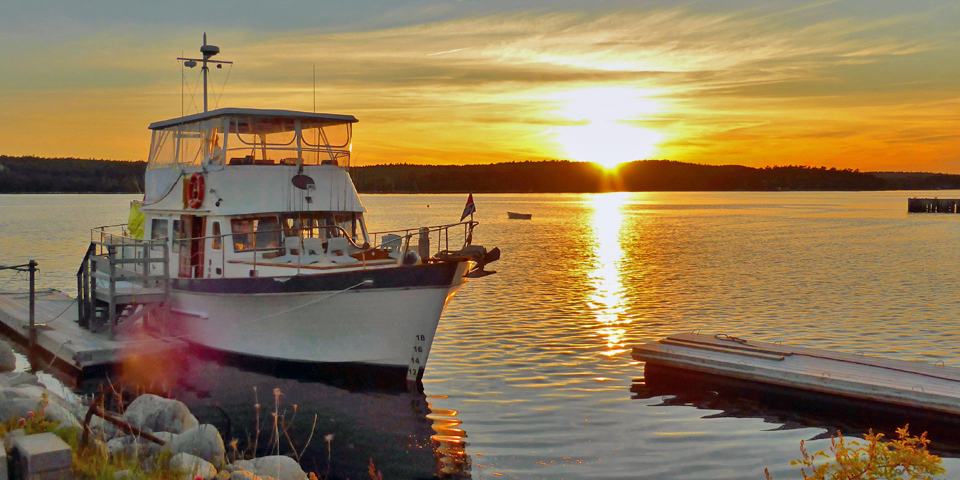

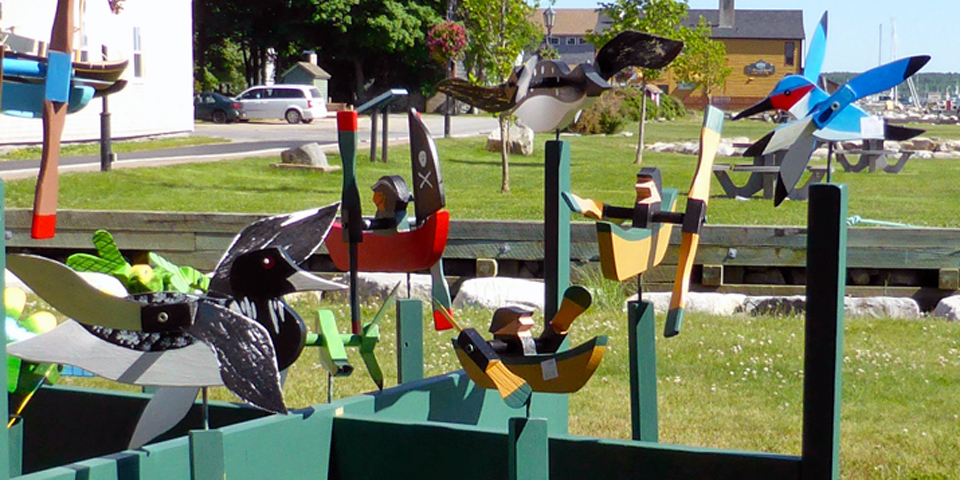
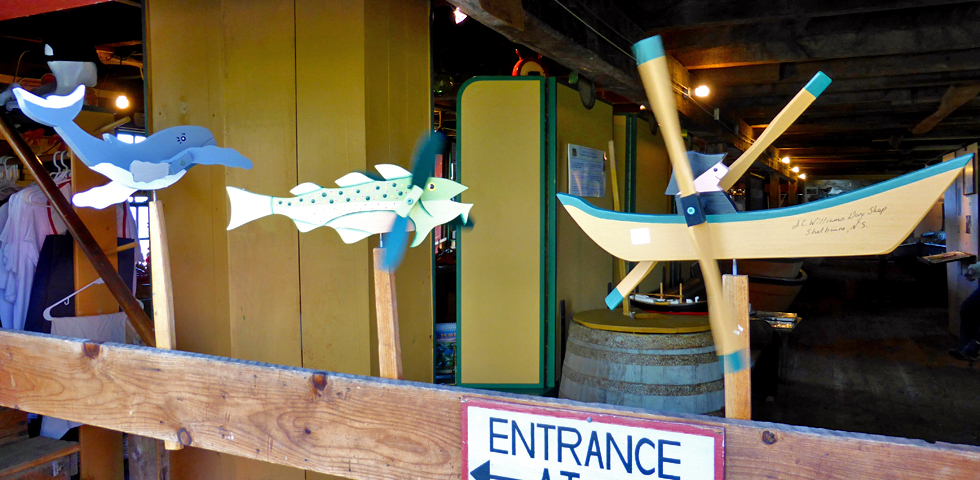
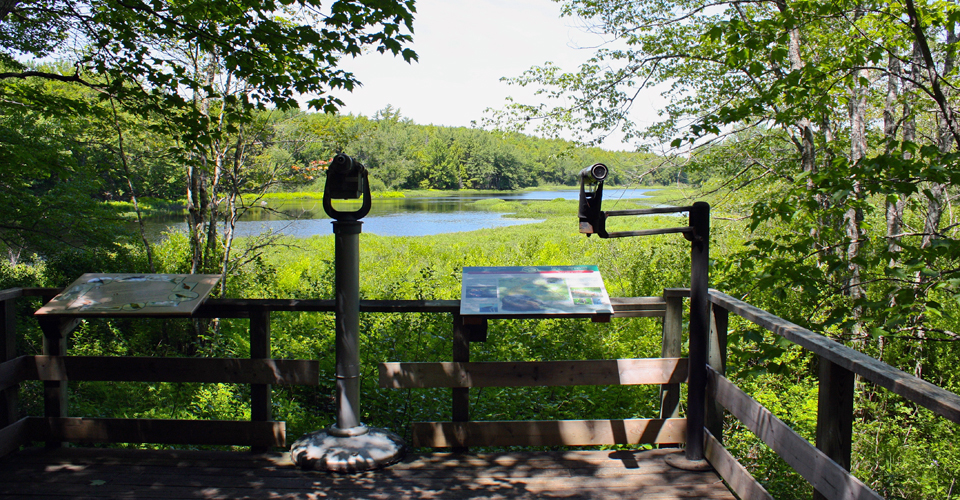
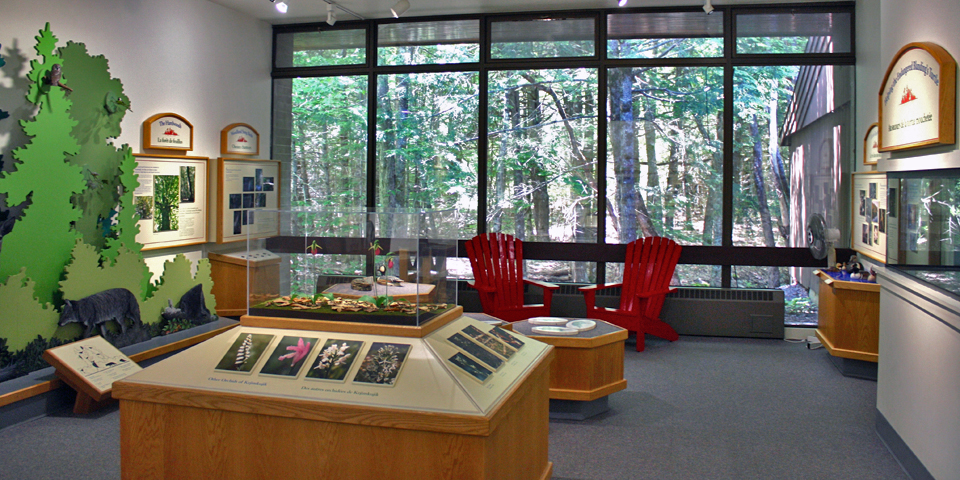
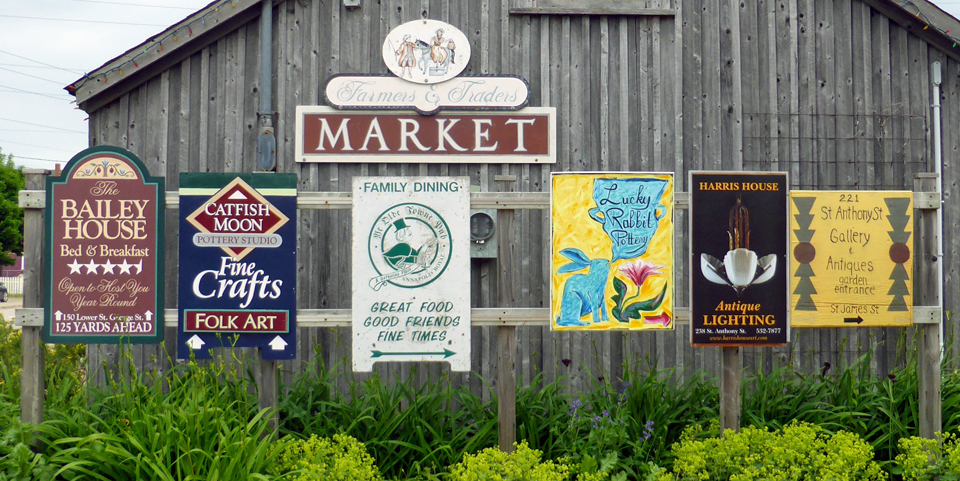
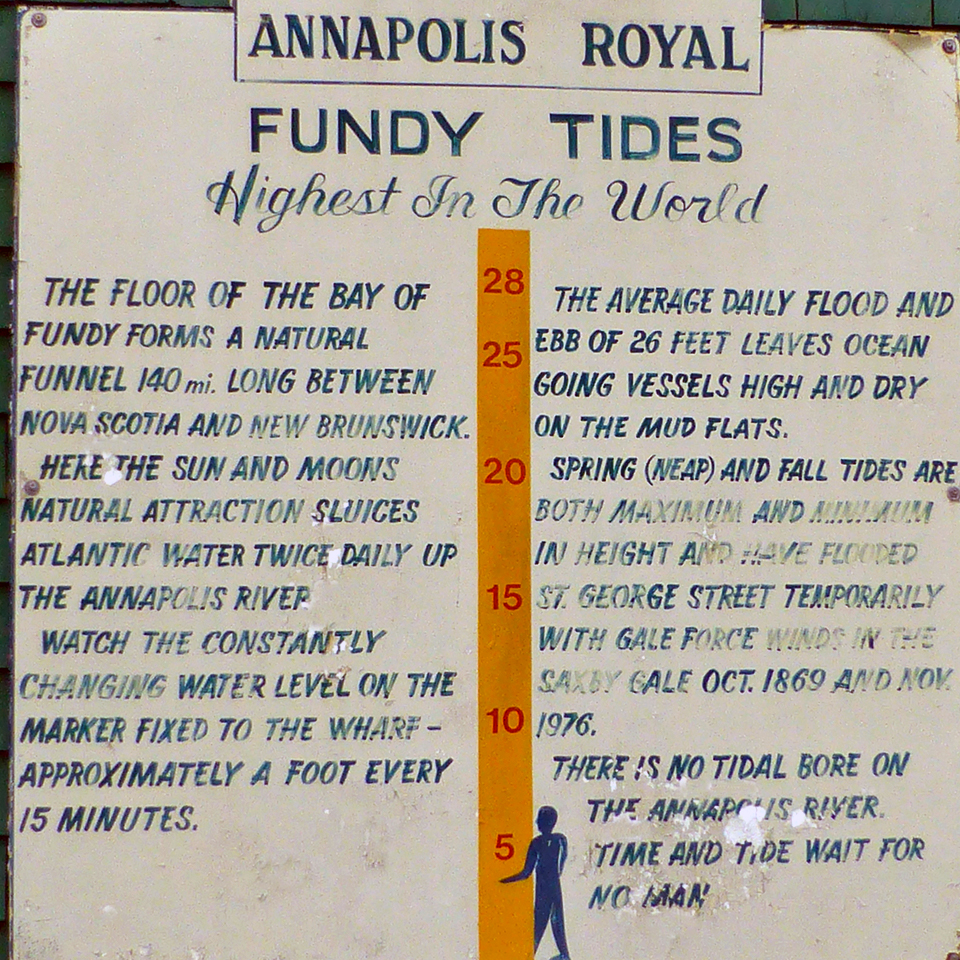

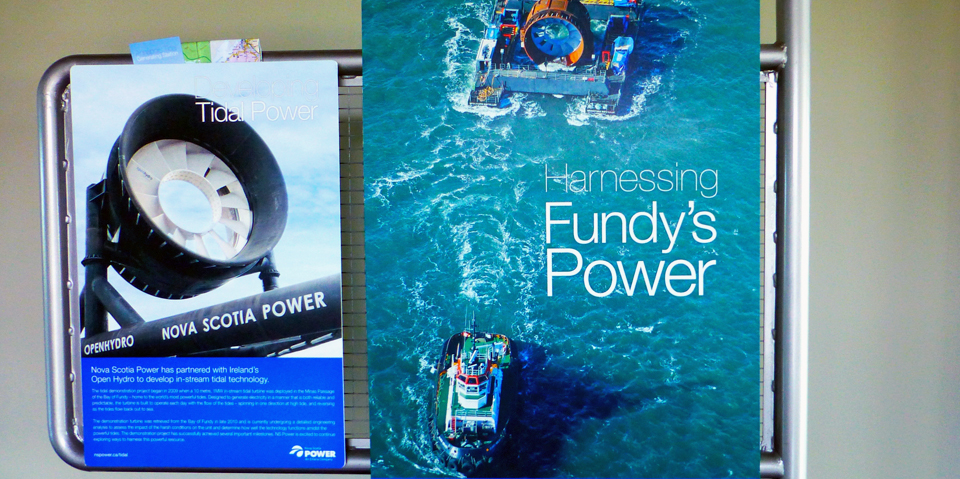
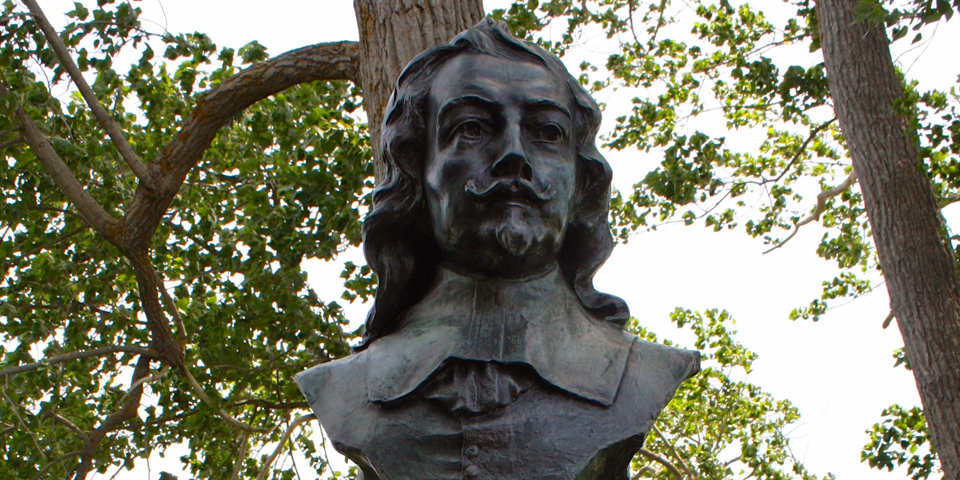
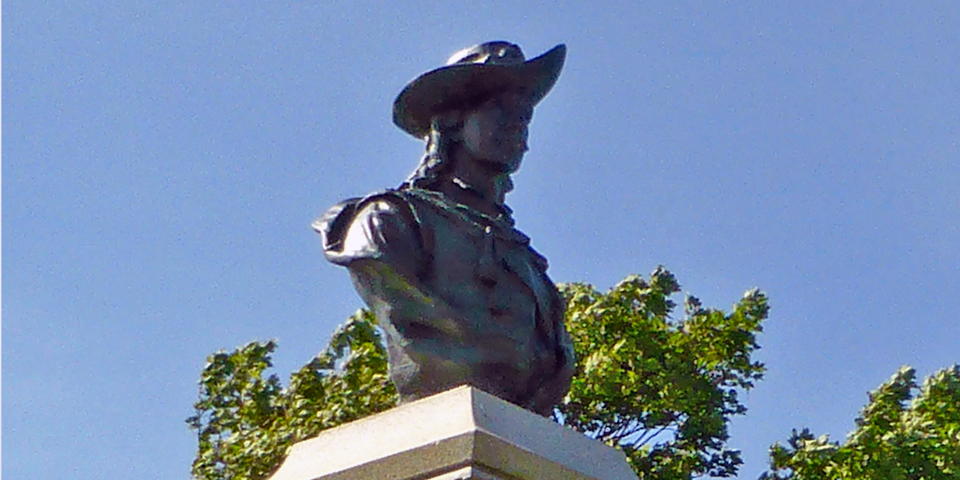
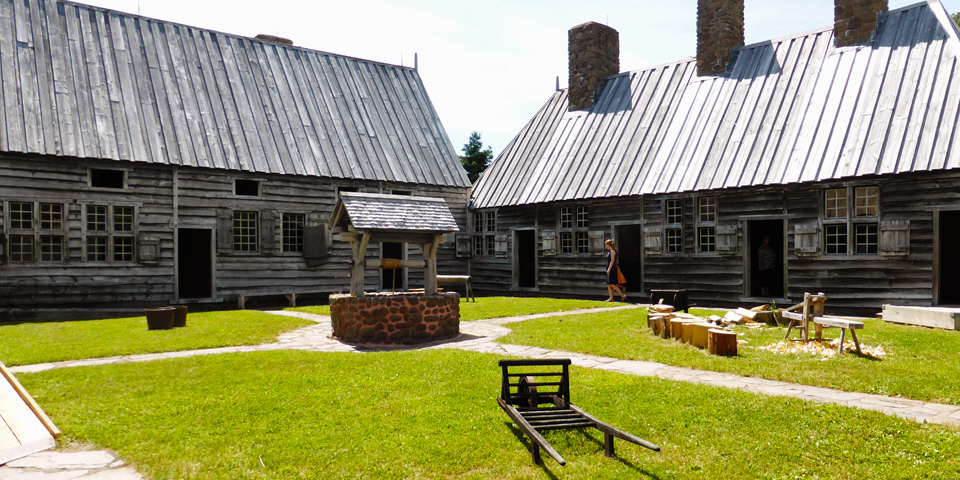
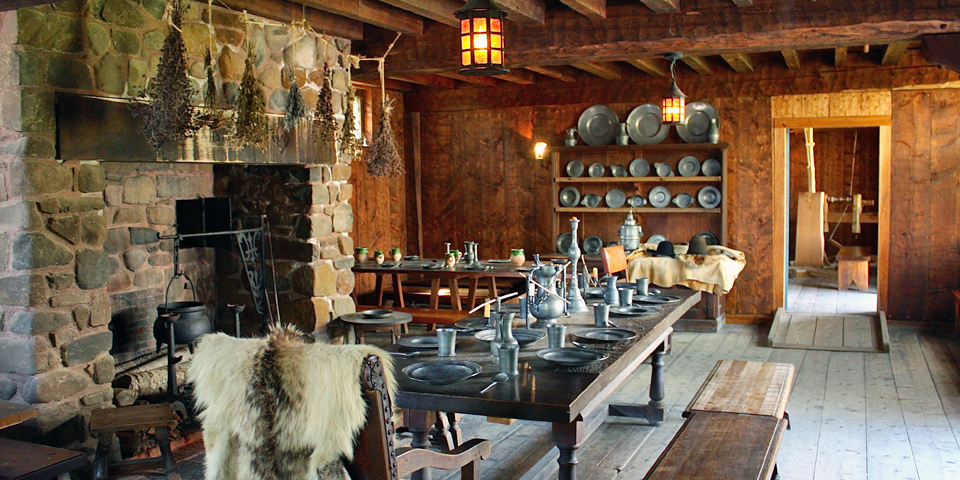
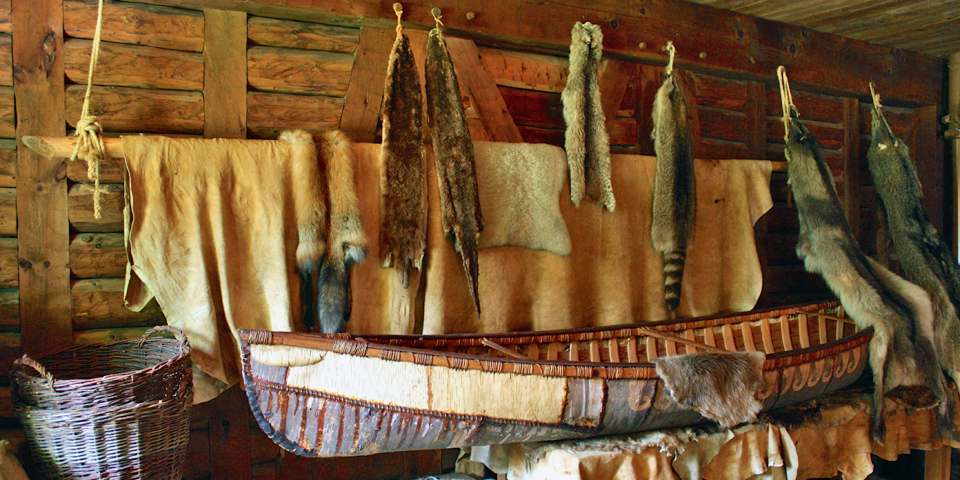
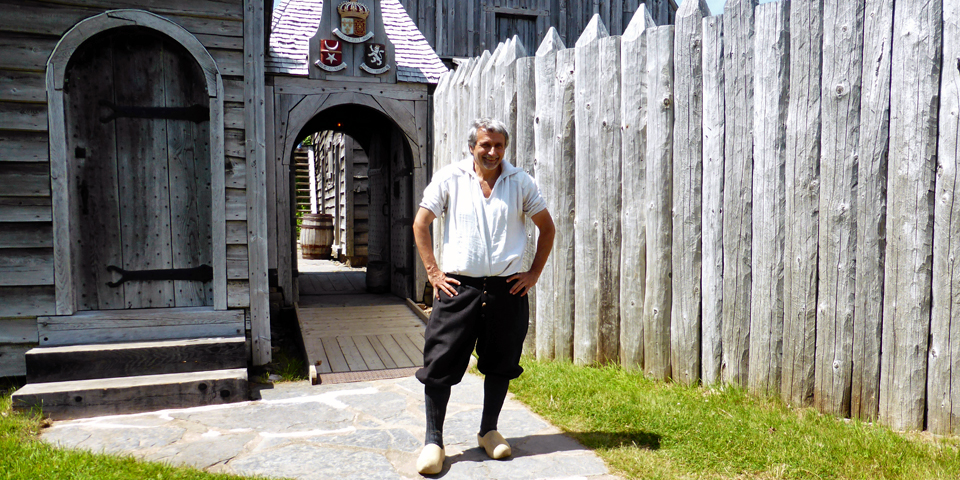
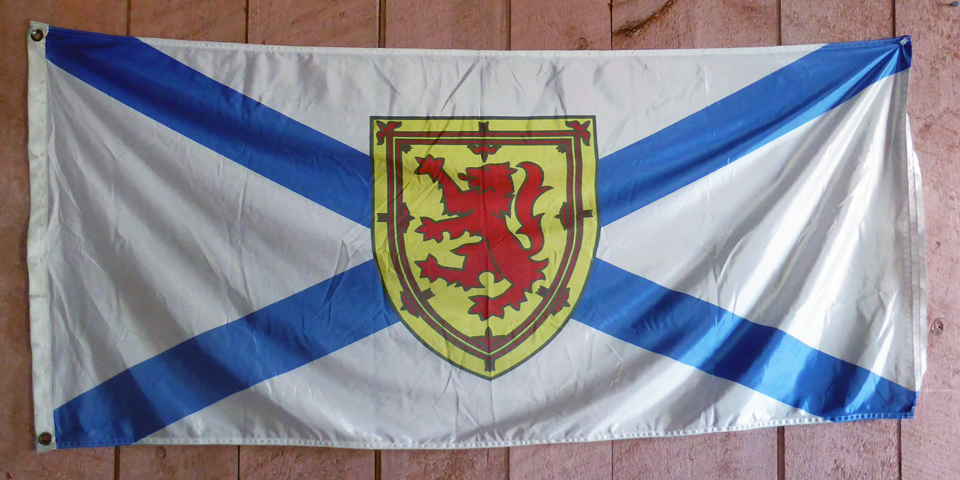
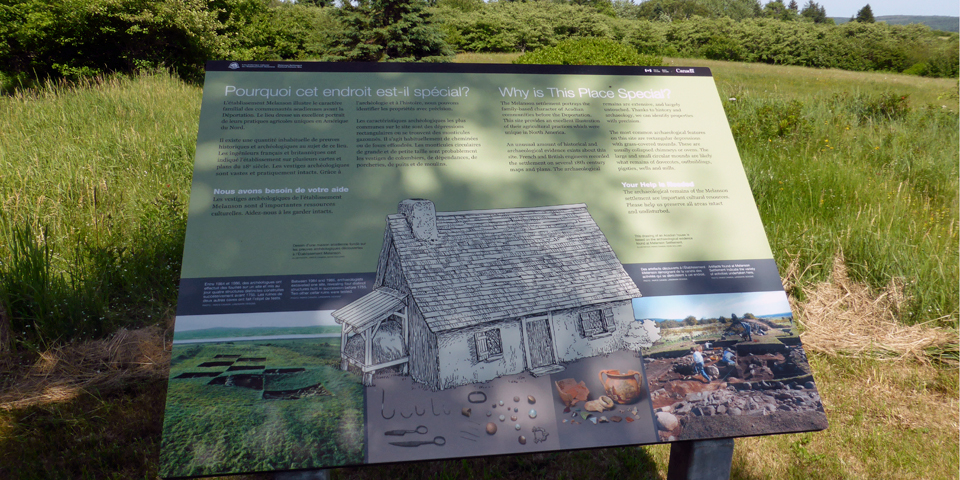
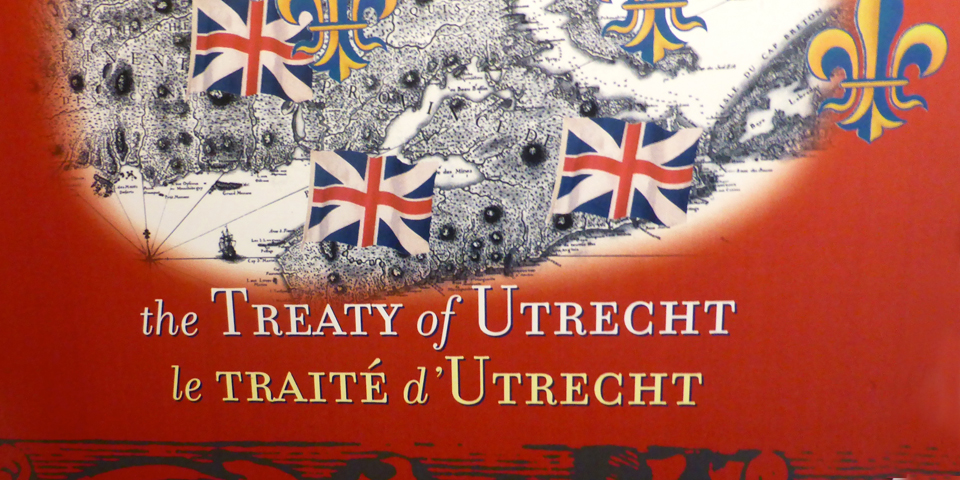

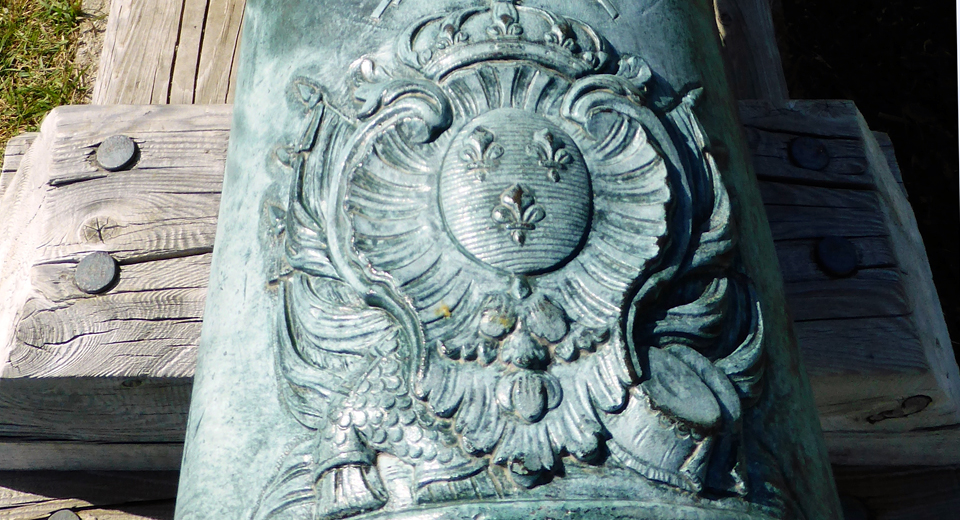
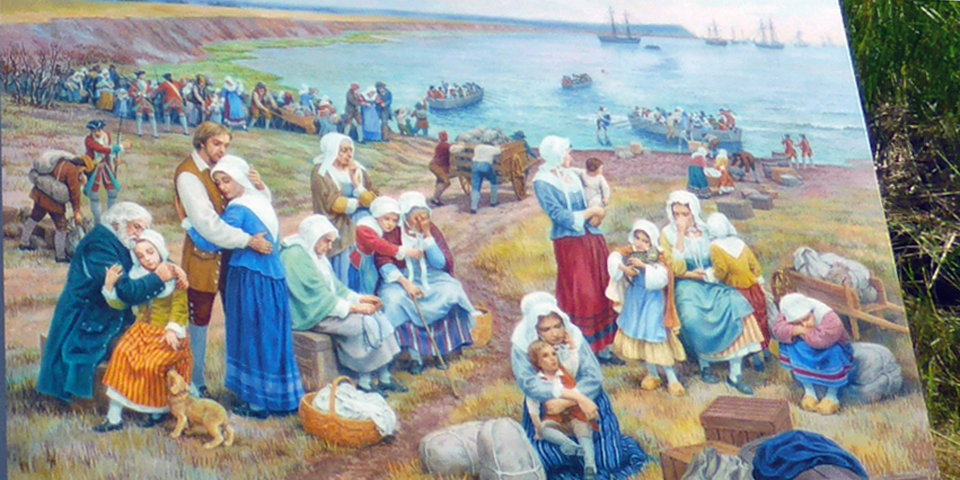
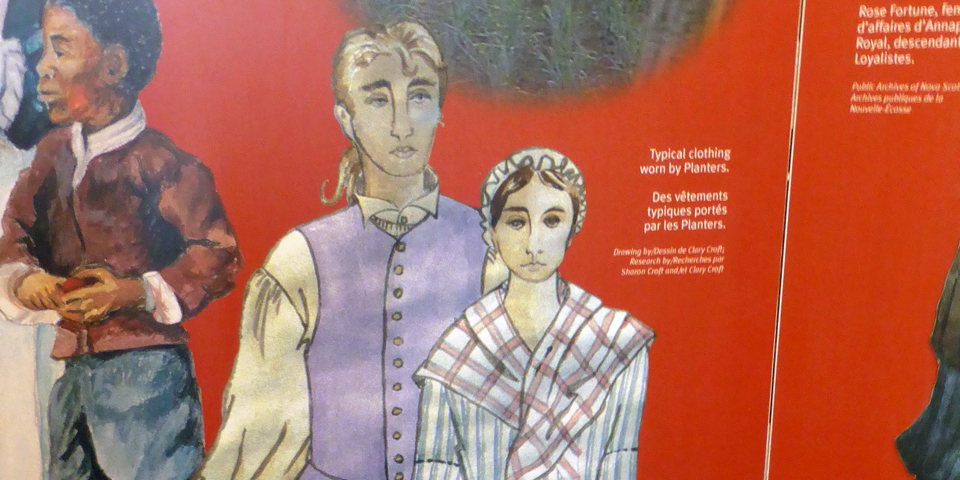
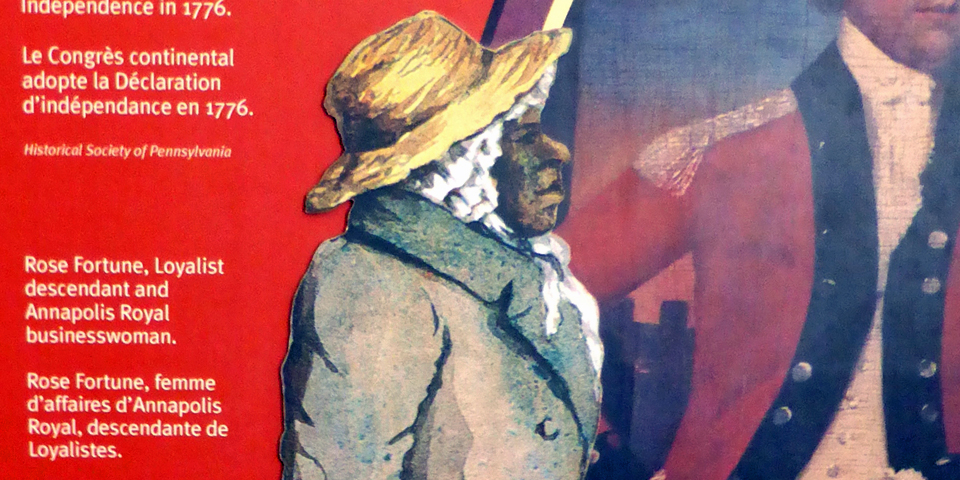
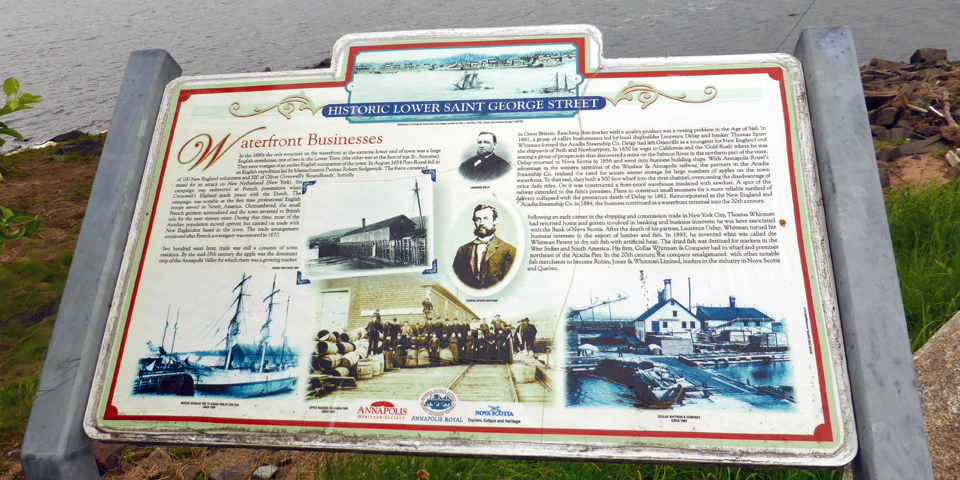
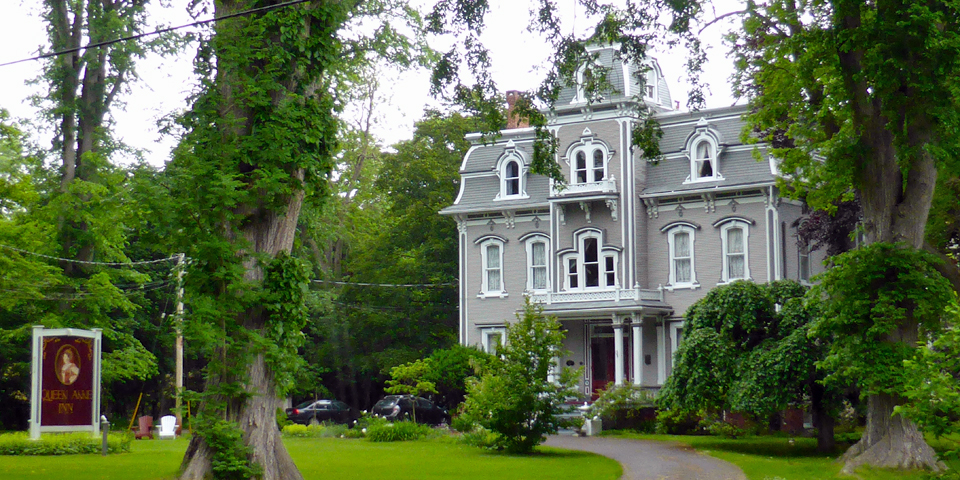
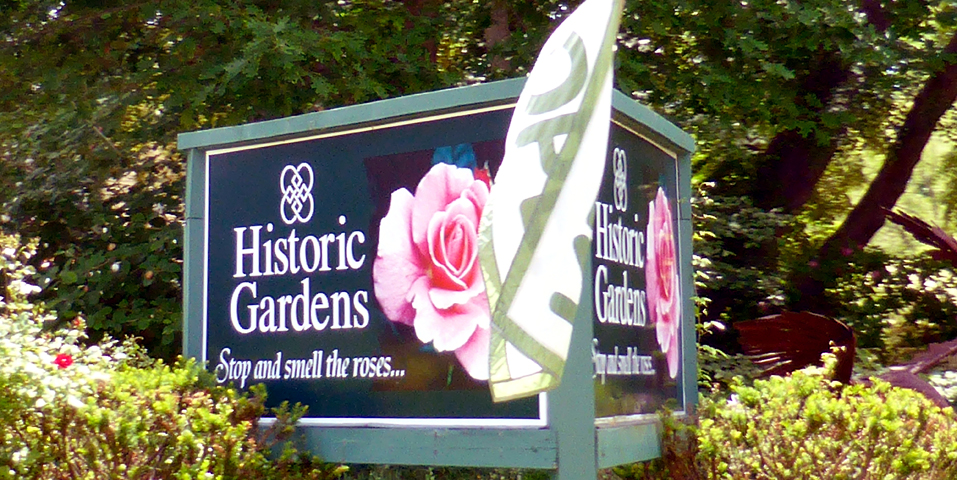

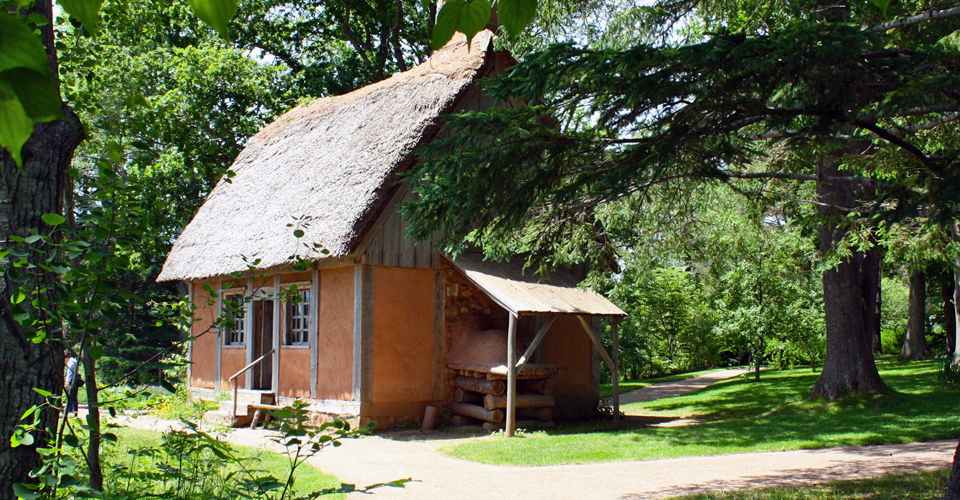
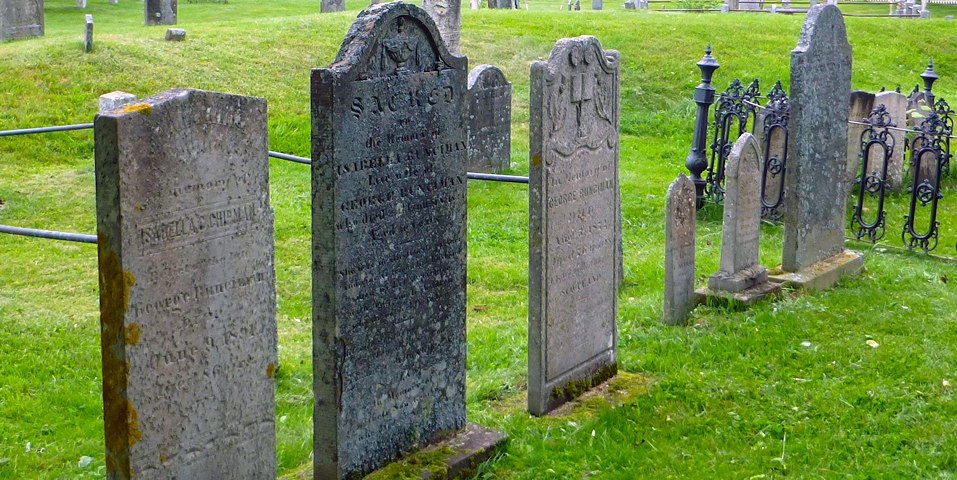
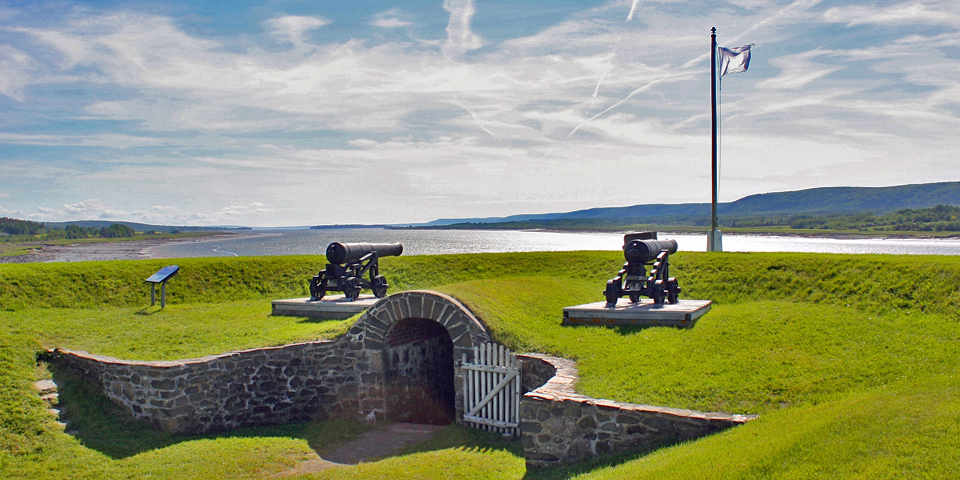
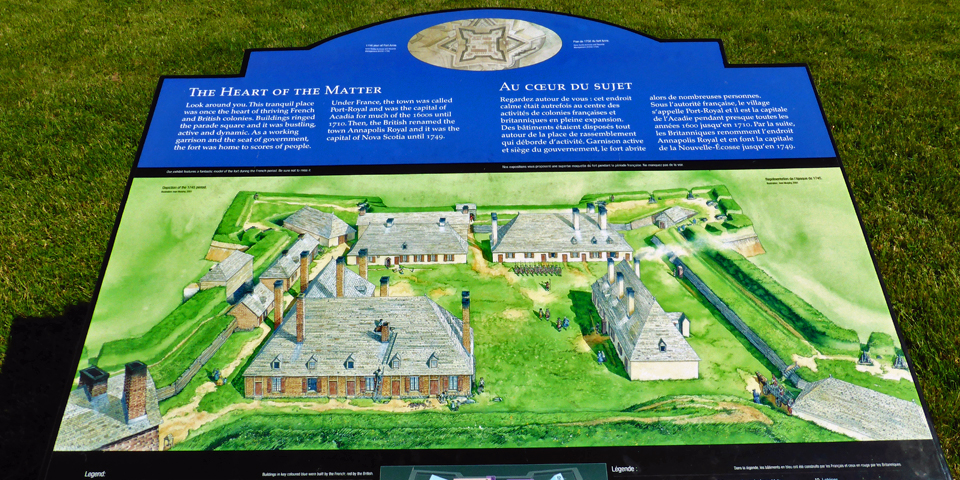
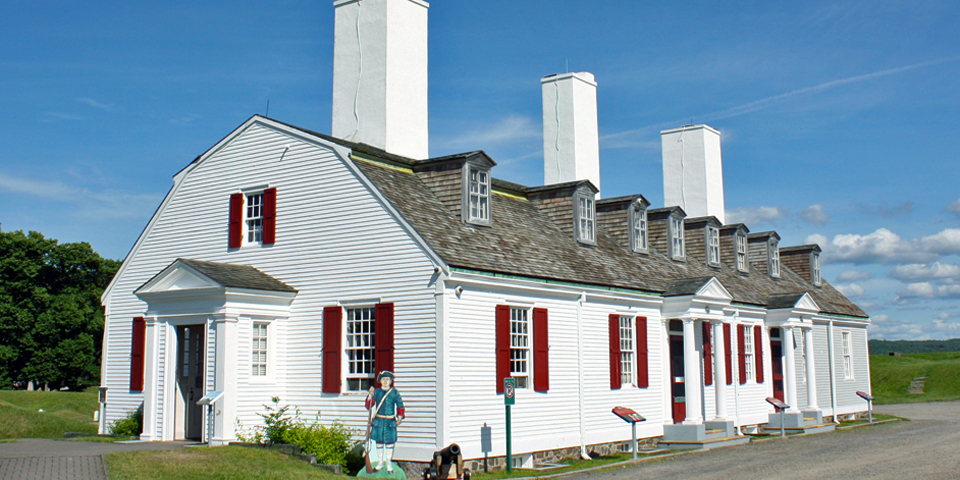
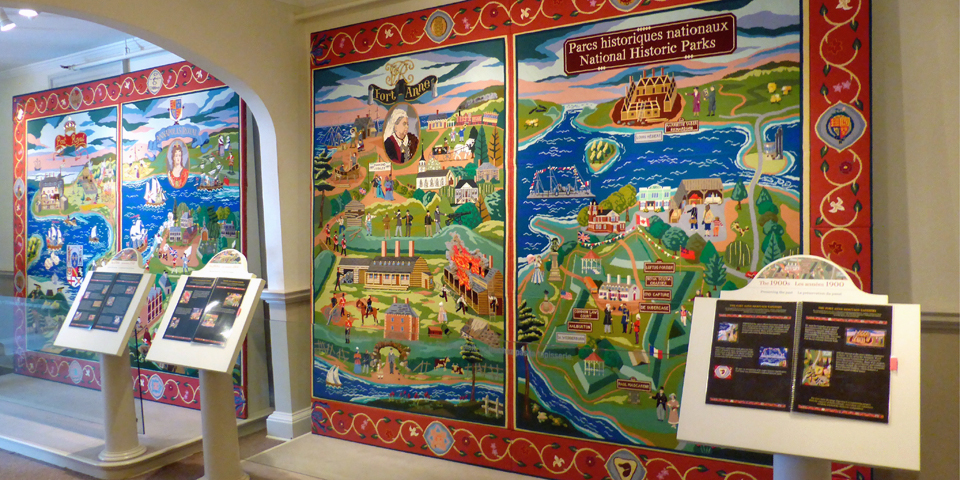
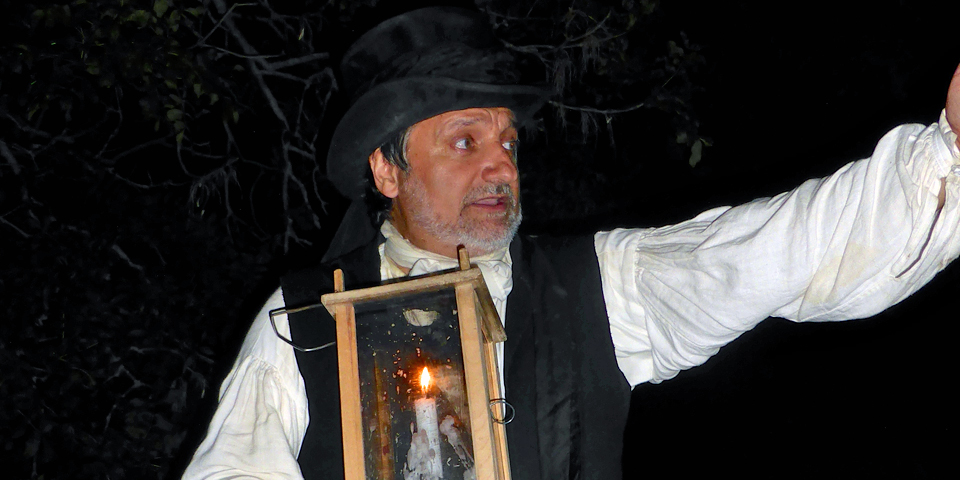
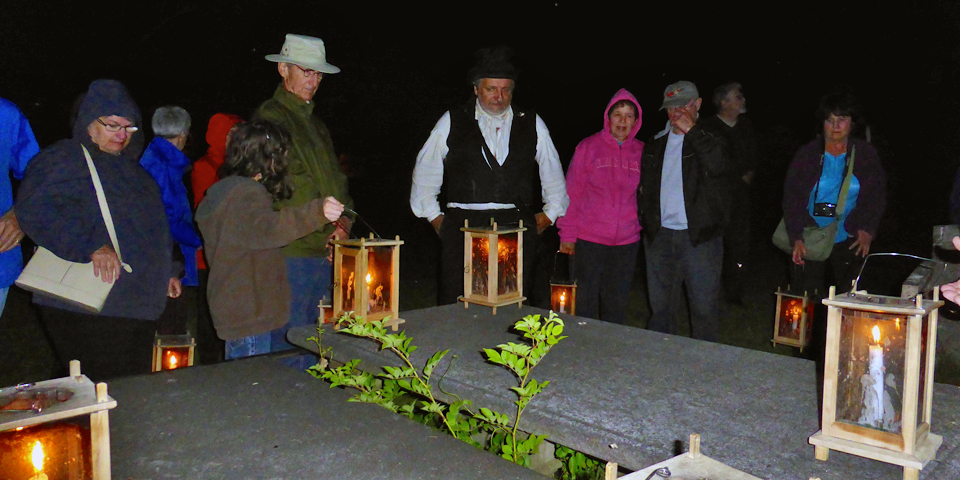
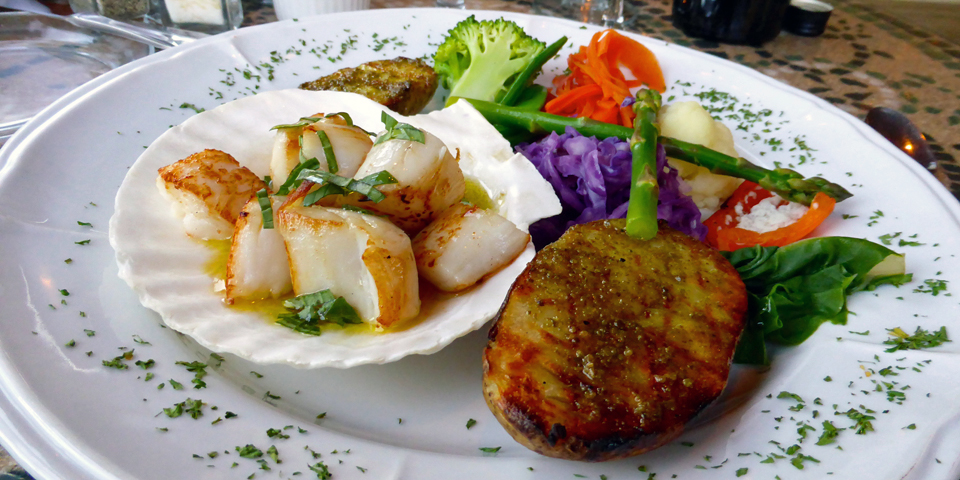

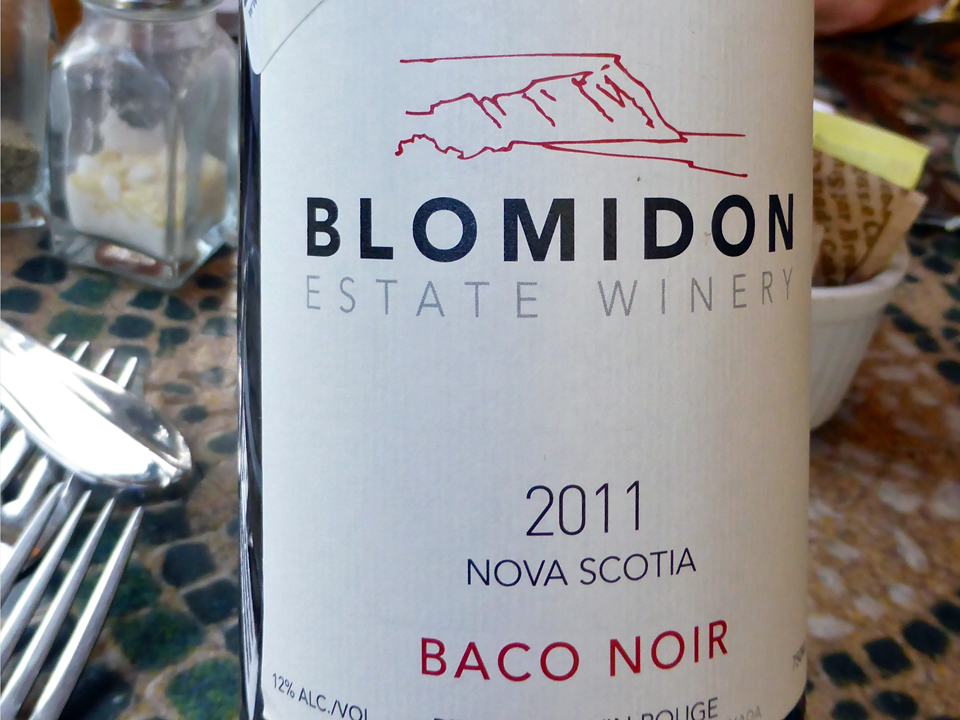
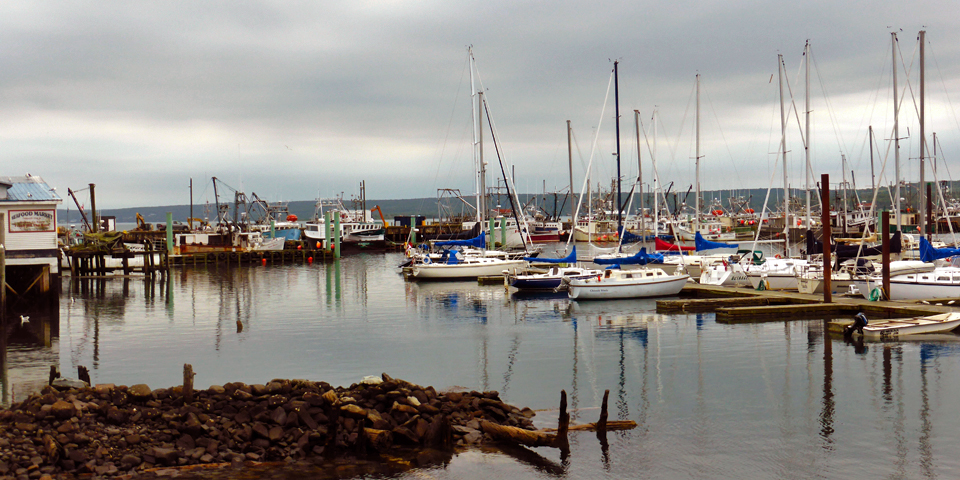
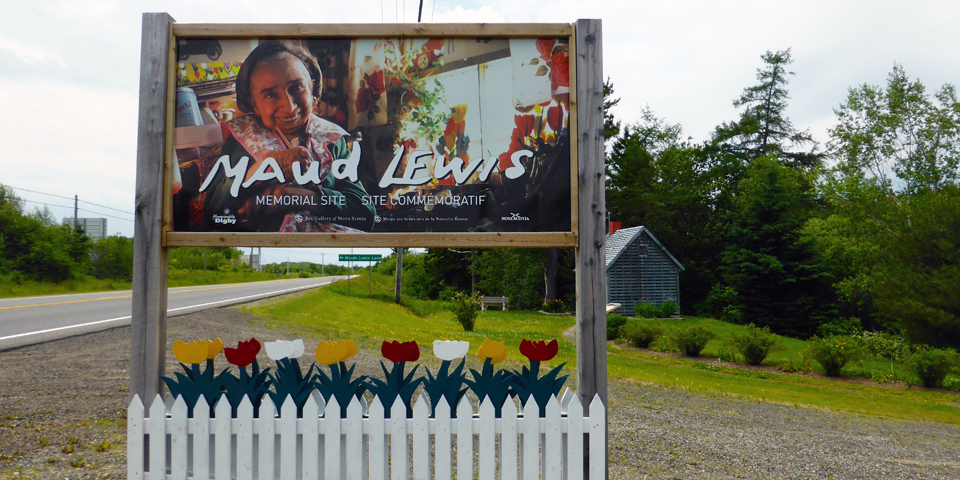
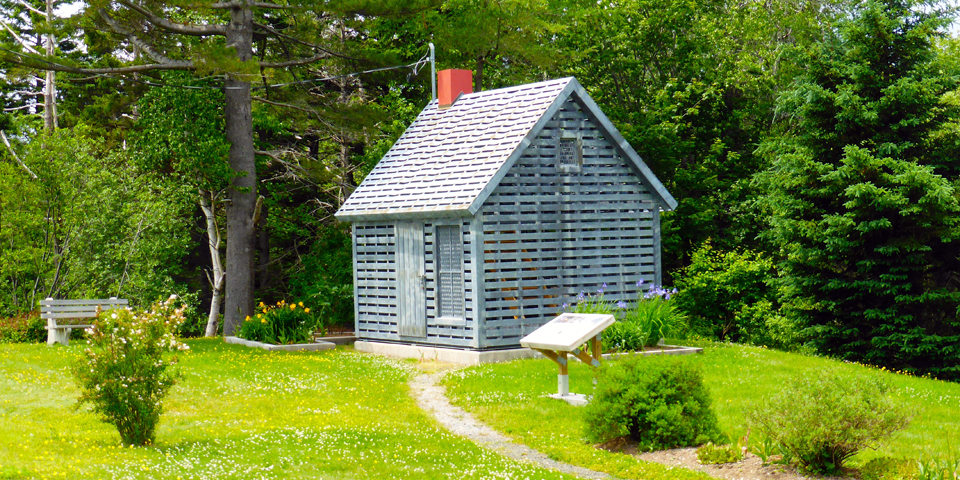
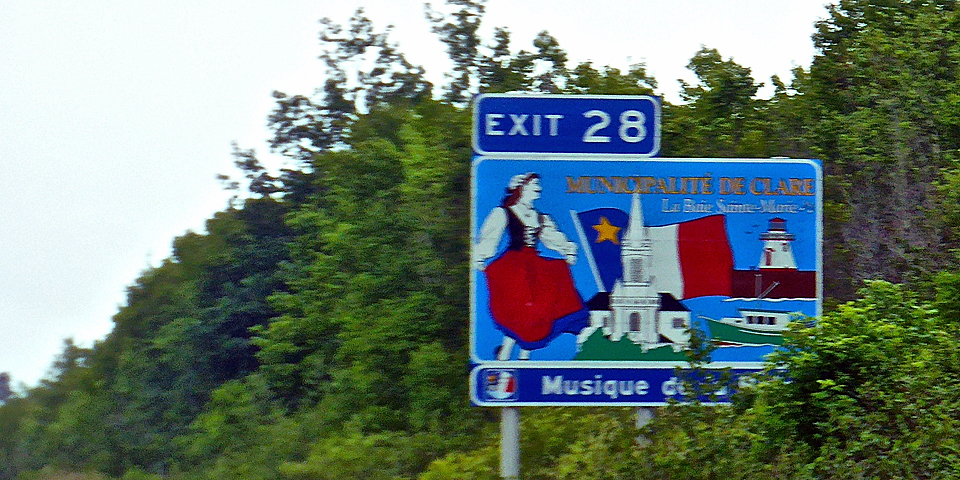
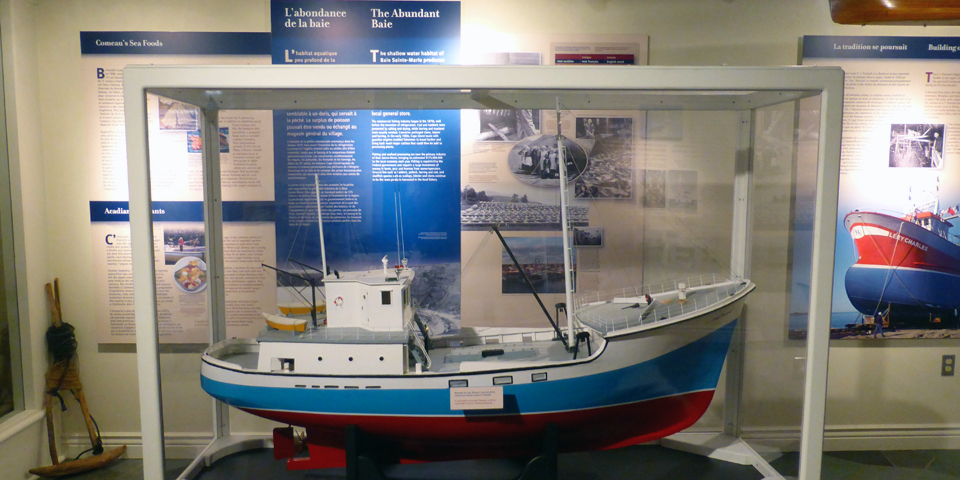


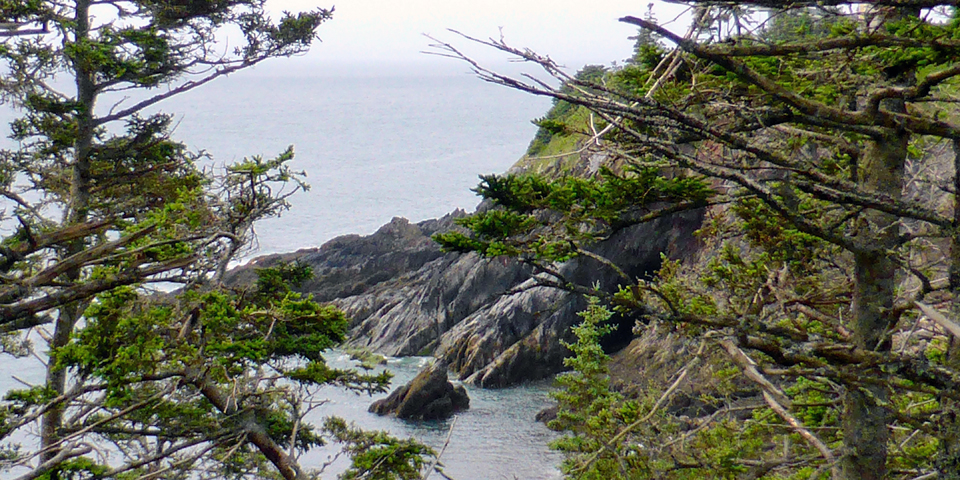
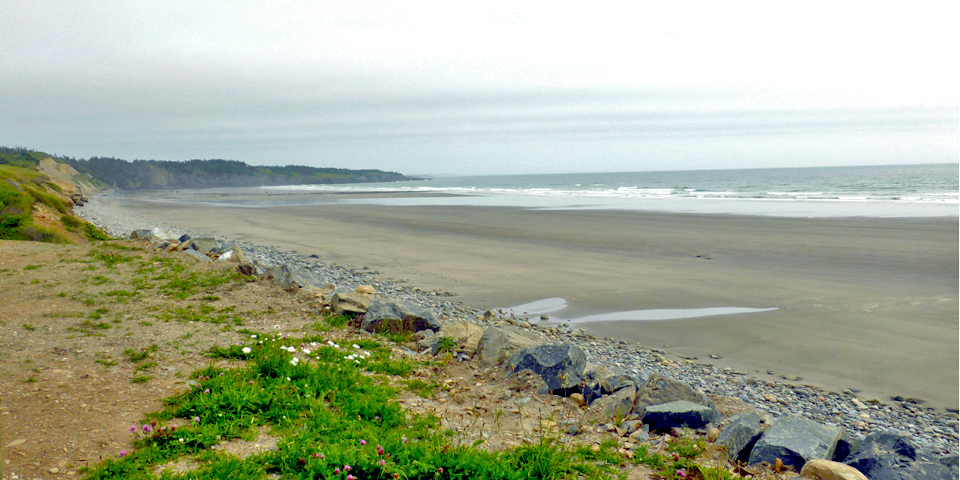
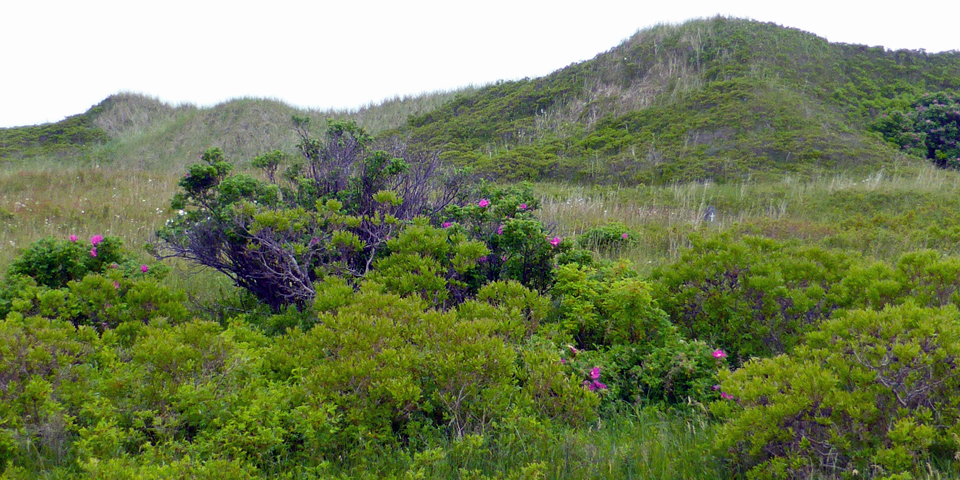
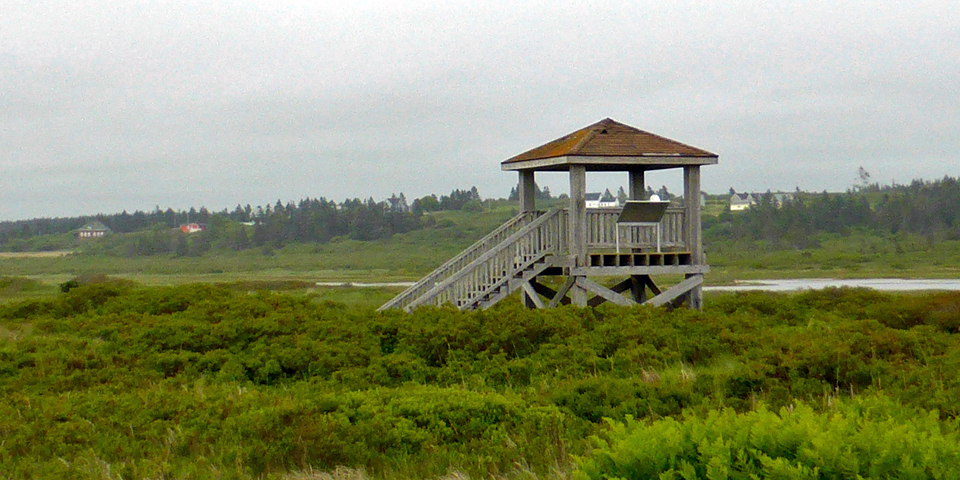
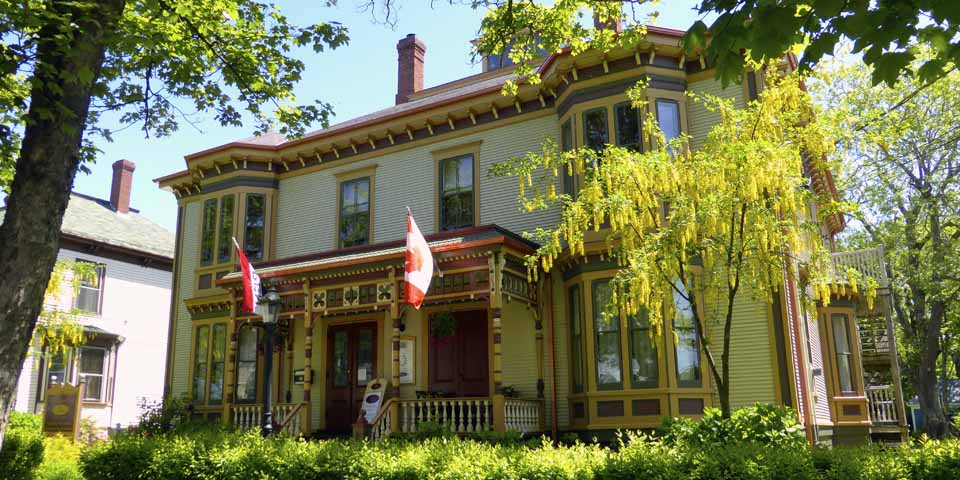


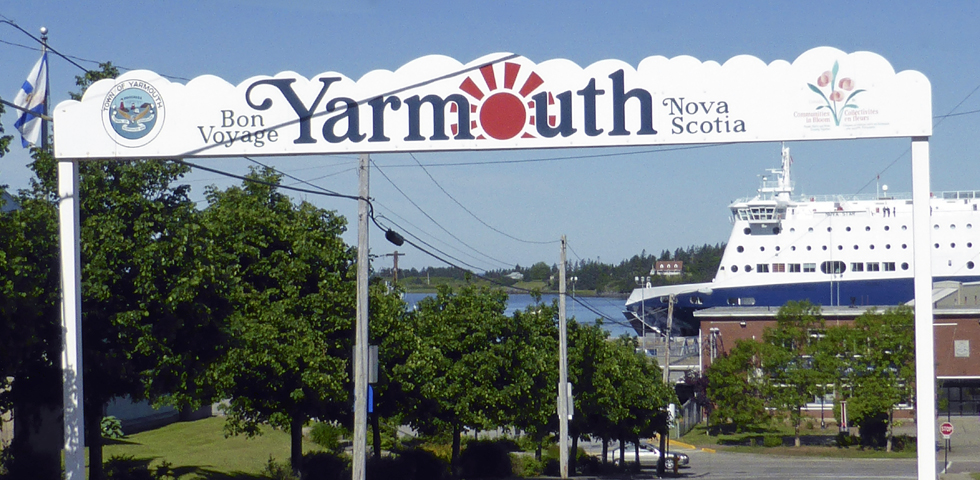
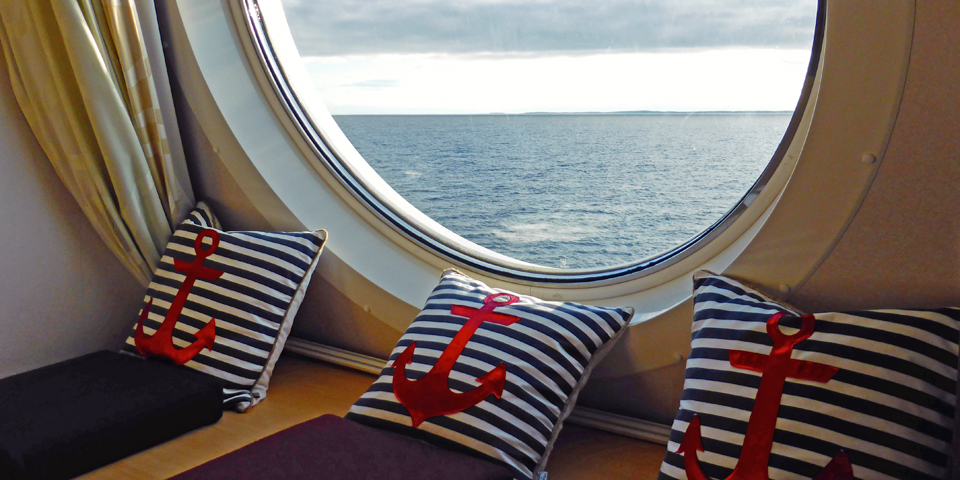
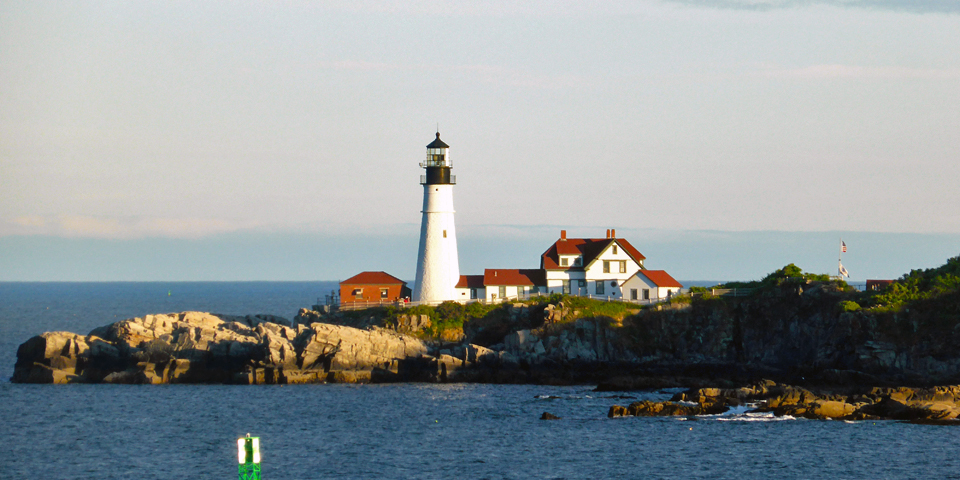
Fantastic photos of a fantastic trip! I hope that next time you visit Nova Scotia you can make a stop on Brier Island, my most favourite place in the province. There’s really great visitor info at http://brierislandguide.com in case you want to make this dream a reality. 🙂
Thank you, Heather! WE hope to visit Nova Scotia again soon and will keep Brier Island in mind.Thanks for the tip!
Great pictures,glad to see you enjoyed your stay in Nova Scotia.Thanks,Maggie and Laurie Horton,folkartists….
Thank you, Maggie and Laurie. It was a pleasure to meet you. We hope to stop at Sticks and Stones Folk Art the next time we are in the area.